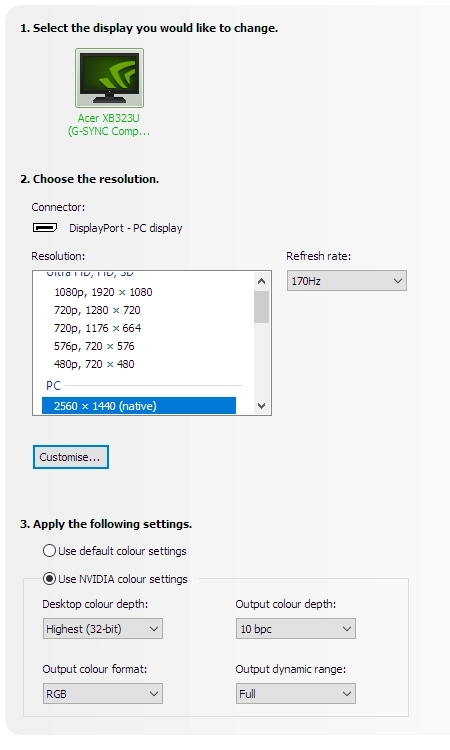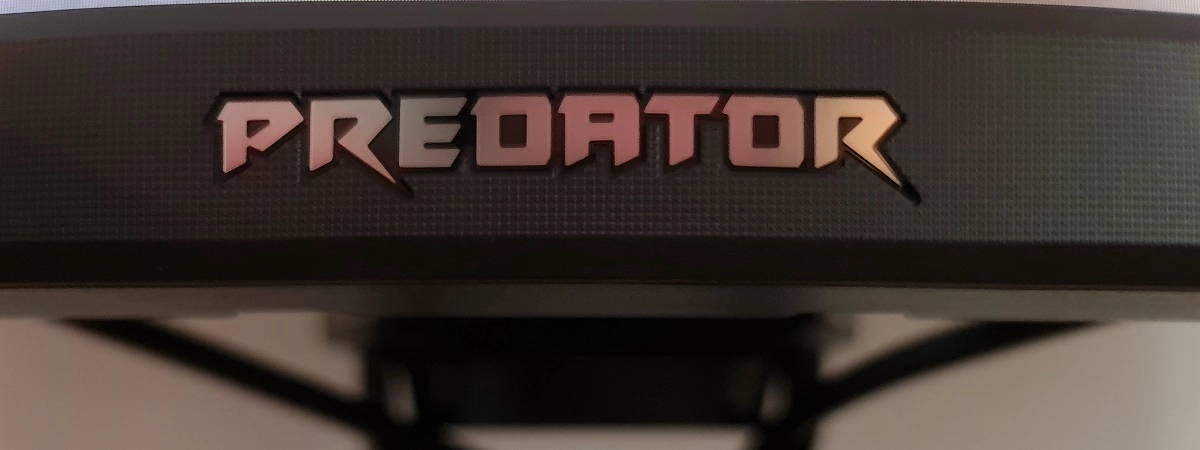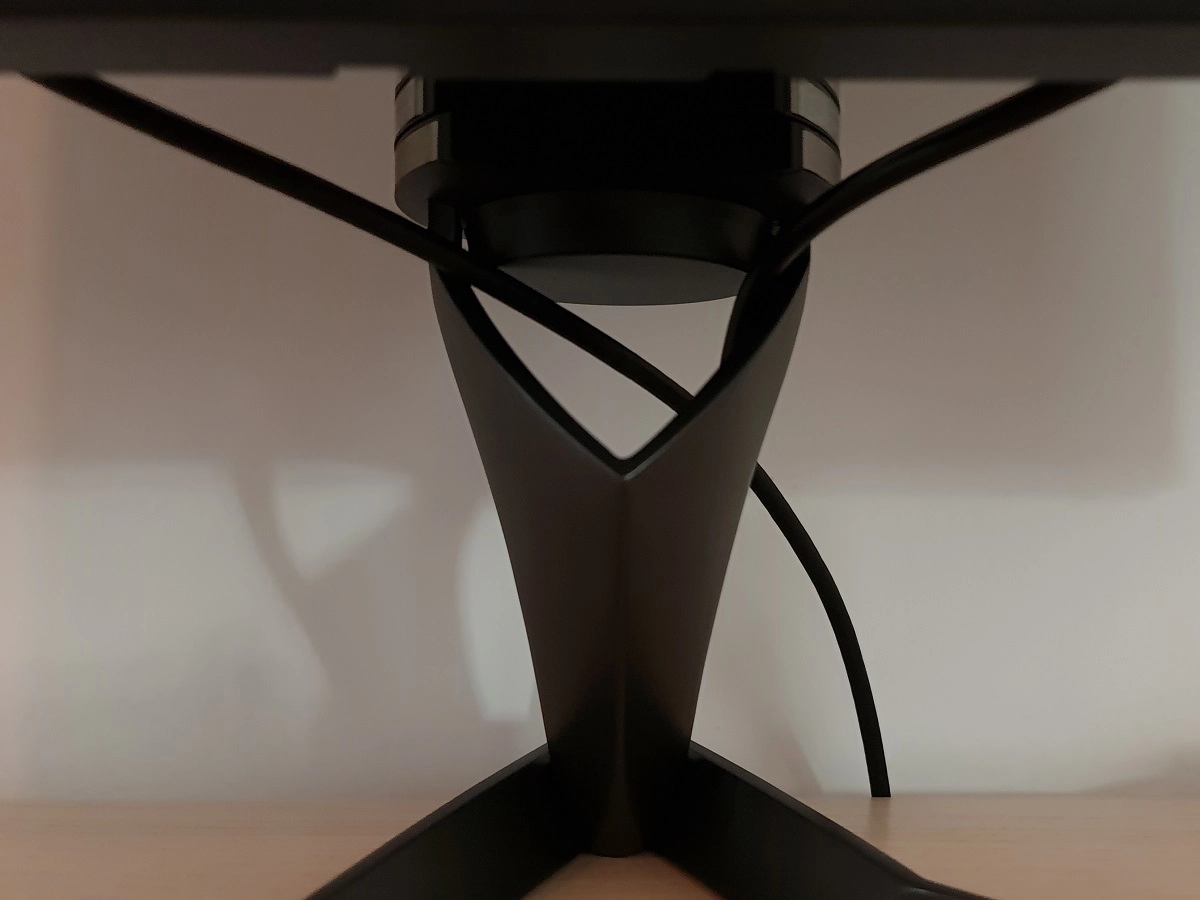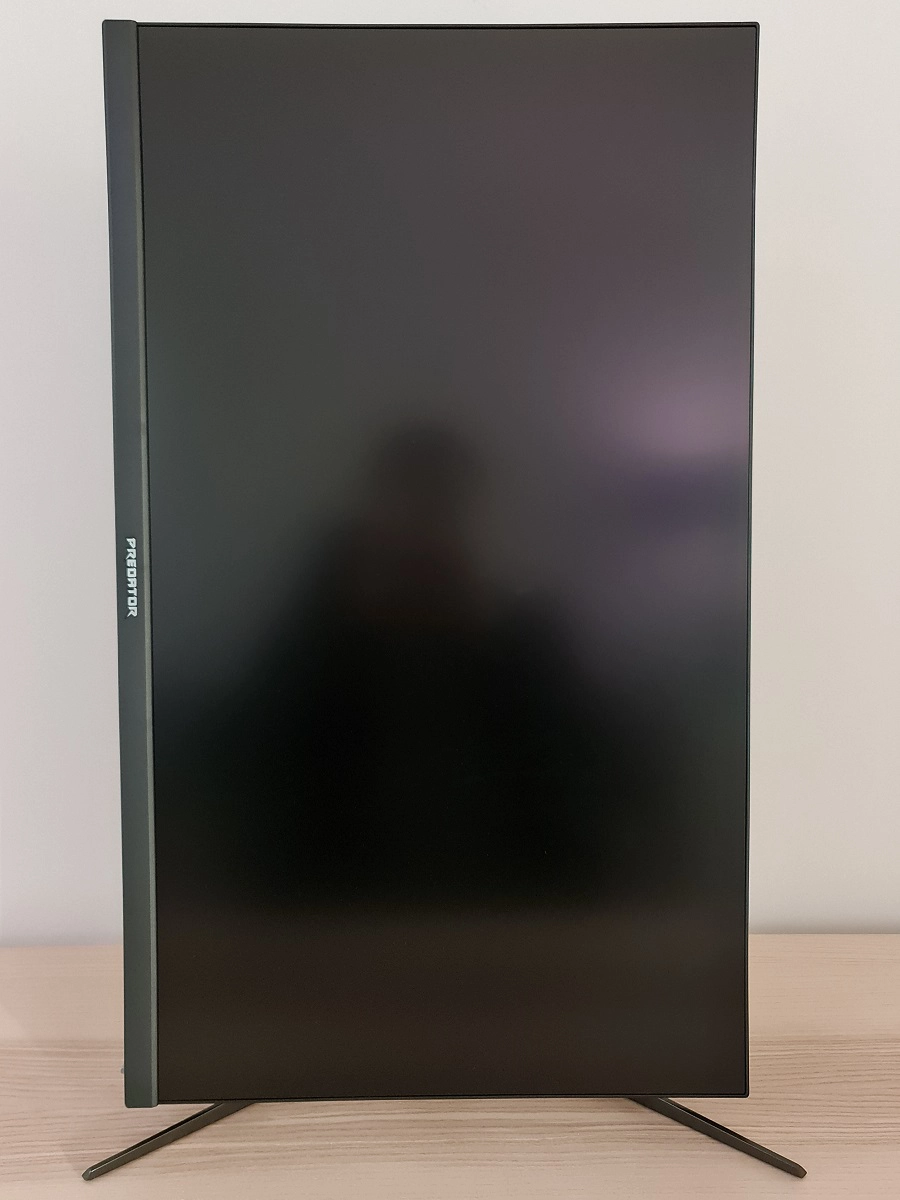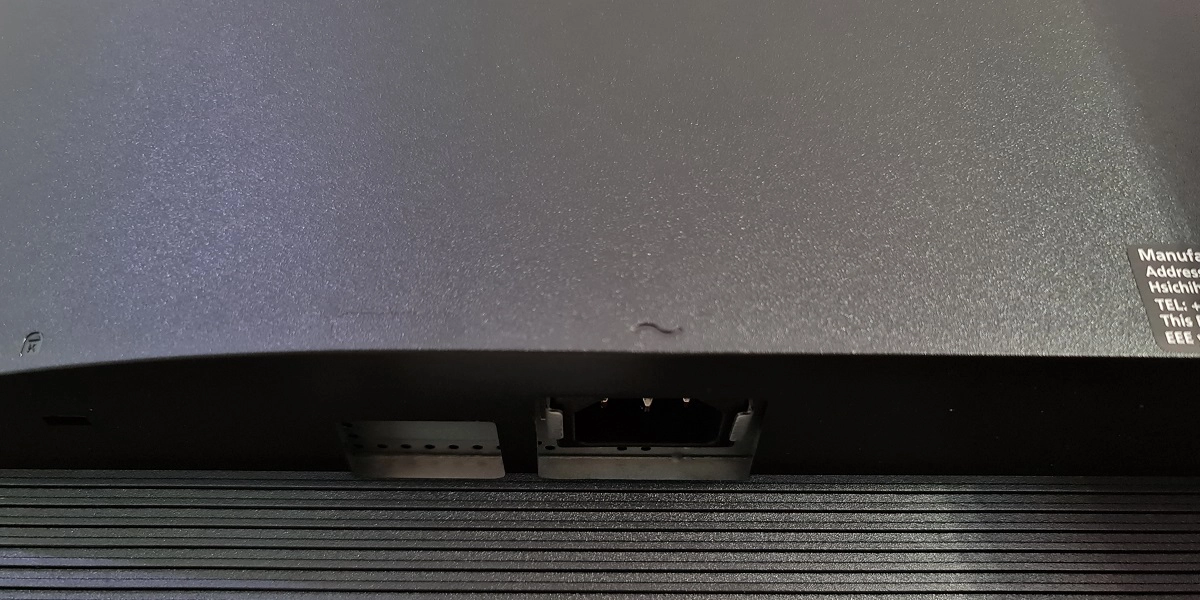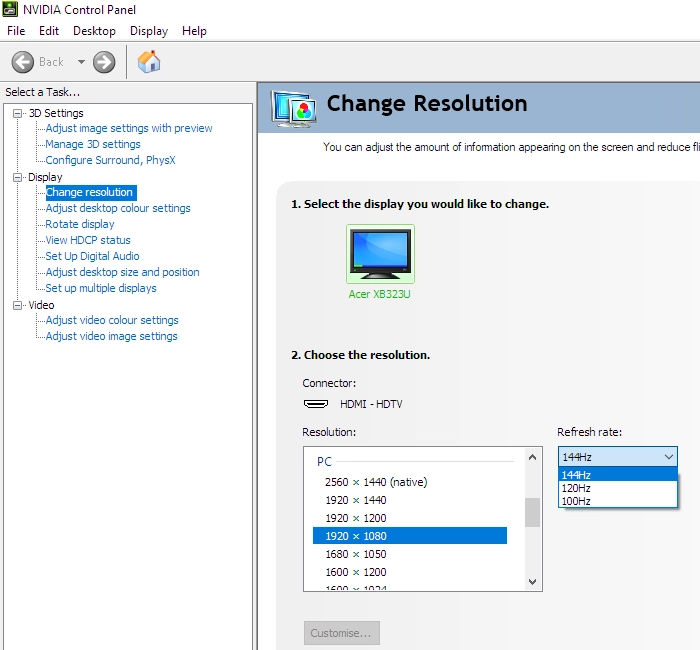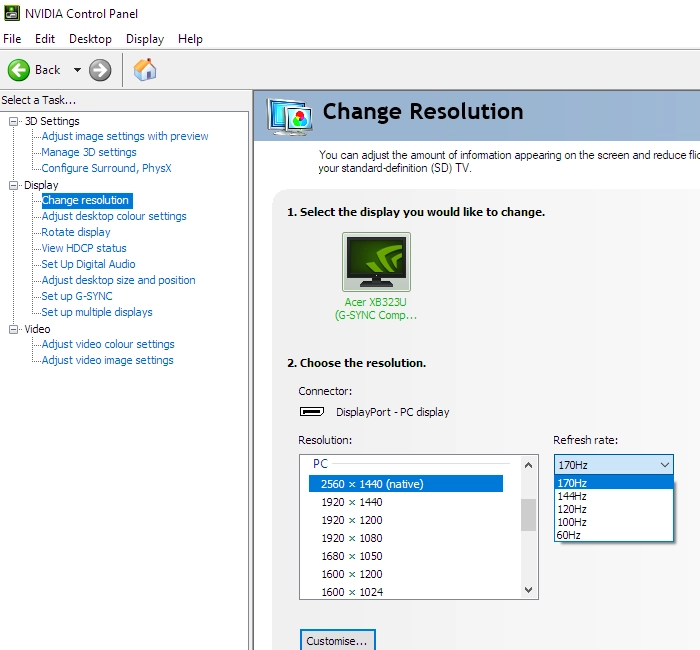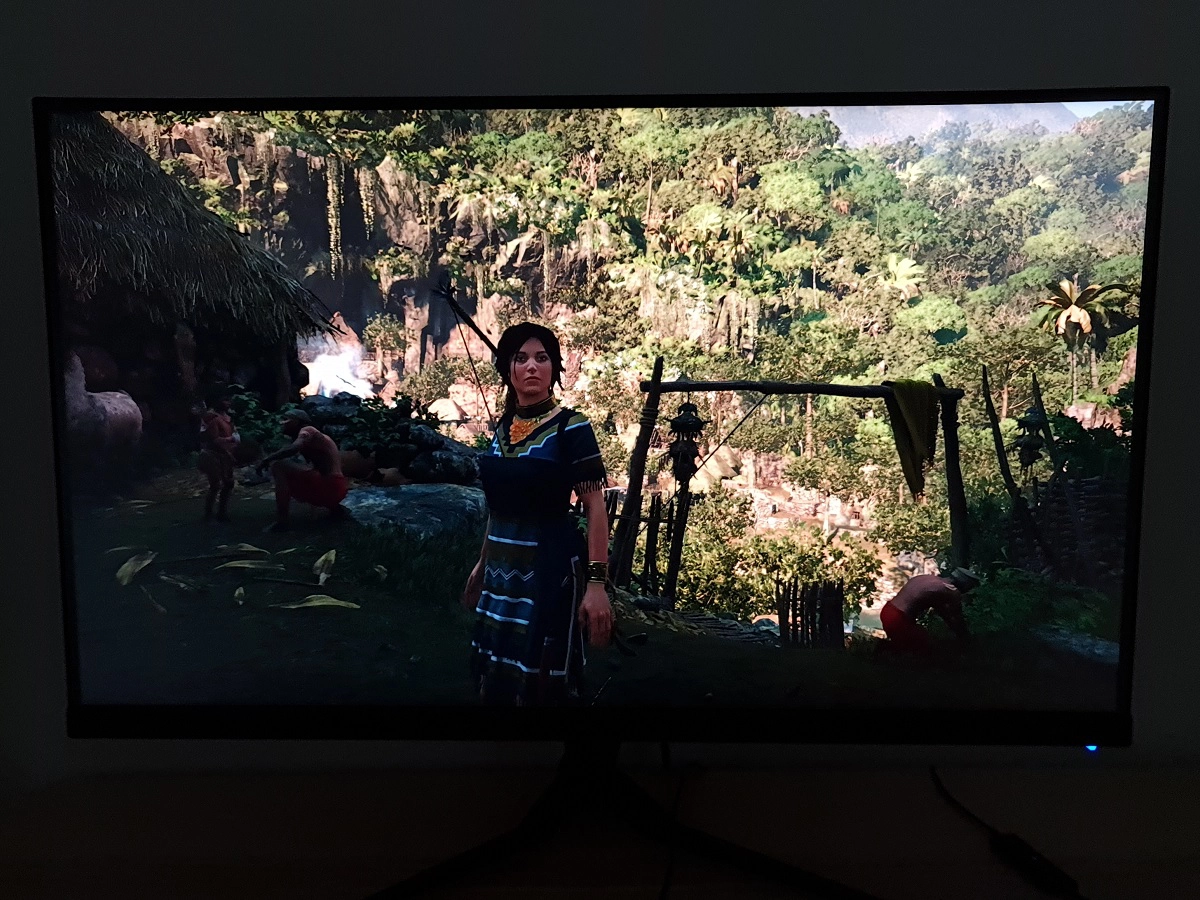Author: Adam Simmons
Date published: November 26th 2020
Table of Contents
Introduction
Many enjoy the combination of ~32” screen size, 2560 x 1440 (WQHD) resolution and high refresh rate. Up until now, such options have been restricted to the VA (Vertical Alignment) panel type. And the vast majority have been curved. The Acer XB323U GP (XB323U GPbmiiphzx) offers a refreshing alternative, with its flat IPS (In-Plane Switching) type panel. The monitor couples with various attractive features such as Adaptive-Sync and VESA DisplayHDR 600 support. We put this monitor to the test with our usual suite of ‘real-world’ tests.
Specifications
The monitor uses a 32” AU Optronics AHVA (Advanced Hyper-Viewing Angle) IPS-type panel. This supports true 8-bit colour, a 170Hz refresh rate and 2560 x 1440 (WQHD) resolution. A 1ms (“Up To 0.5ms” in some marketing material) grey to grey response time is specified, but as usual don’t put too much weight on this figure. Some of the key ‘talking points’ for this monitor have been highlighted in blue below, for your reading convenience.
*10-bit can be selected in the graphics driver at up to 170Hz when using DP and running at the native resolution. 10-bit can be selected at up to 100Hz when using HDMI. The panel used is only an 8-bit panel, but the monitor’s scaler can add a dithering stage to facilitate work with higher bit depth content.
As an Amazon Associate I earn from qualifying purchases made using the below link. Where possible, you’ll be redirected to your nearest store. Further information on supporting our work. The monitor has a familiar Predator aesthetic, with sharp-lined appearance. There are no obnoxious colourful elements, with the powder-coated metal stand offering a nice premium feel. The stand has a Y-shaped design and flared neck that’s somewhat reminiscent of the Olympic torch. The flared neck isn’t visible from most normal viewing positions at a desk, however. The bottom bezel is textured dark grey plastic with a central shiny silver Predator logo. It’s ~23mm (0.91 inches) thick. The top and side bezels are dual-stage with a slim panel border that’s flush with the rest of the screen plus a slim hard plastic outer component. Including both components, the bezels are ~8mm (0.31 inches) at the top and ~9mm (0.35 inches) at the sides. The main feature from the front is of course the 32” screen, with a very light matte anti-glare finish – we explore both the size and screen surface and how it influences the experience deeper into the review. The OSD (On Screen Display) is controlled by a joystick and set of buttons at the rear, running vertically down the monitor. Towards the right side, if viewed from the front. There’s a power LED towards the right side of the bottom bezel, facing downwards. This glows blue when the monitor is on and amber when it enters a low power state. The video below runs through the OSD as well as Acer’s accompanying Display Widget software. *Some users have reported they were unable to pivot their monitor, so the stand design appears to have changed so this is not possible. The image below is a macro photograph taken on Notepad with ClearType disabled. The letters ‘PCM’ are typed out to help highlight any potential text rendering issues related to unusual subpixel structure, whilst the white space more clearly shows the actual subpixel layout alongside a rough indication of screen surface. This model uses a very light matte anti-glare screen surface, which offers reasonable glare handling without introducing a layered appearance that would impede the image. The screen surface texture is reasonably smooth, providing a light ‘misty’ graininess when observing lighter content rather than a ‘heavy’ or ‘smeary’ graininess. Most users will find the level of graininess to be entirely unobtrusive here. The XB323U GP includes various presets which Acer simply refers to in the OSD as ‘Modes’; ‘Action (G1)’, ‘Racing (G2), ‘Sports (G3), ‘User’, ‘Standard’, ‘ECO’, ‘Graphics’ and ‘HDR’. With the exception of ‘HDR’ (High Dynamic Range), these presets simply change various settings in the OSD. With an SDR (Standard Dynamic Range) signal detected, the ‘HDR’ mode is similar to ‘Standard’ with many settings locked off. And applies a high brightness level plus the ‘Super Sharpness’ filter by default. If you make manual adjustments to most settings in the other modes (including but not limited to brightness, contrast or the colour channels) the monitor automatically switches to the fully customisable ‘User’ setting. The first 3 presets in the list (G1, G2 and G3 for short) are fully customisable, like the ‘User’ setting. These numbered presets allow you to easily save and recall 3 sets of preferred settings*. The exception here is that adjustments made to colour channels (‘Color Temp.’ set to ‘User’) are applied universally, so you can’t have different custom colour channel adjustments and easily recall them. We look at these presets in the OSD video, but for the purposes of this table we’ll simply focus on a range of manual adjustments instead. The table provides gamma and white point readings taken using a Datacolor SpyderX Elite colorimeter, alongside general observations. Our test system uses Windows 10 with an Nvidia RTX 3090 connected via DisplayPort. No additional monitor drivers or ICC profiles were specifically loaded and the monitor was left to run for over 2 hours before readings were taken or observations made. Aside from our ‘Test Settings’ where various adjustments are made, assume factory defaults are used. The monitor was set to 170Hz in Windows for this table, although that did not significantly affect our observations here. When viewing the figures in this table, note that for most PC users ‘6500K’ for white point and ‘2.2’ for gamma are good targets to aim for. Individual targets depend on individual uses, tastes and the lighting environment, however. *We encountered a peculiar bug when using the ‘Action (G1)’ preset, but Acer was unable to replicate this on another unit so it appears to be an isolated issue. The monitor did not apply the saved settings correctly when switched off then back on with that preset active. Or if switching from the ‘sRGB’ setting straight into this ‘Action (G1)’ preset. The same issue occurred if running the monitor in HDR and then switching back to the ‘Action (G1)’ preset before an SDR signal was received. The colours were completely off, very muted in some respects with the colour gamut hugely displaced and showing significant red under-coverage. The image returned to normal if certain setting changes were then made, including but likely not limited to; cycling the ‘Gamma’ mode, turning on the ‘sRGB’ mode then disabling it again or switching to the ‘HDR’ mode and then back to ‘G1’ again without an HDR signal being active. Rather than worrying about any of this, we’d simply recommend using ‘Racing (G2)’ and ‘Sports (G3)’ for customised settings instead as those worked fine. Or in all likelihood you’ll be able to use ‘G1’ in the way you’d expect as this appears to be an isolated issue with our unit.
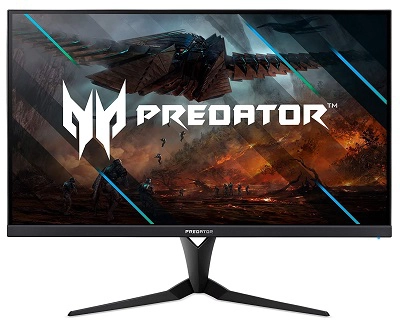
Features and aesthetics
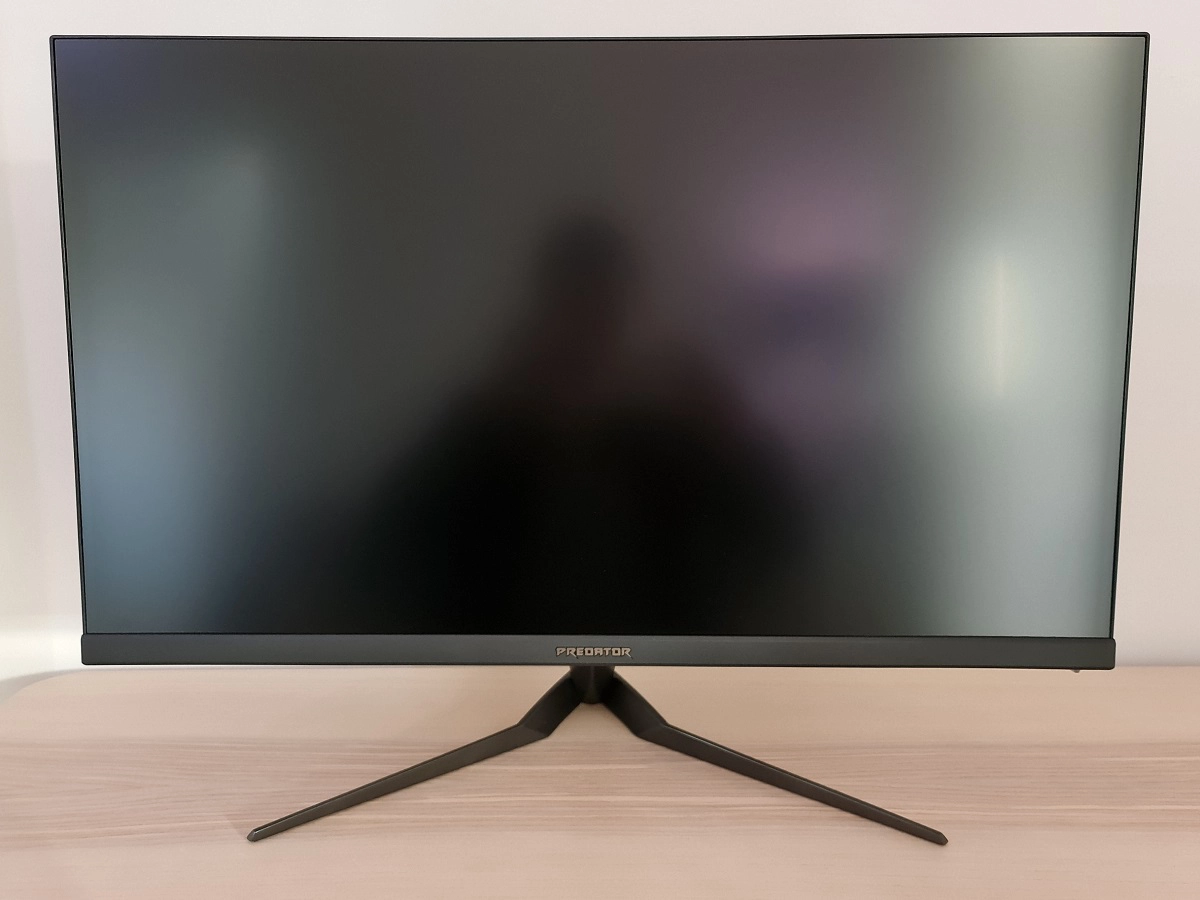
From the side the screen is fairly slender at thinnest point, ~22mm (0.87 inches) – it lumps out centrally towards the stand attachment point. At the left side there are 2 USB 3.0 ports, with the top one supporting fast-charging for connected devices. The included stand offers full ergonomic flexibility; tilt (5° forwards, 23° backwards), swivel (20° left, 20° right), height adjustment (130mm or 5.12 inches) and pivot* (90° clockwise or anti-clockwise rotation into portrait). At lowest stand height the screen clears the desk by ~40mm (1.57 inches) with the top of the screen ~470mm (18.50 inches) above the desk. The total depth of the monitor including stand is ~300mm (11.81 inches), with the screen a couple of cm back from the front edge of the stand. So not the shallowest nor deepest design, allowing you to keep reasonable distance between your eyes and the screen unless your desk is relatively shallow.
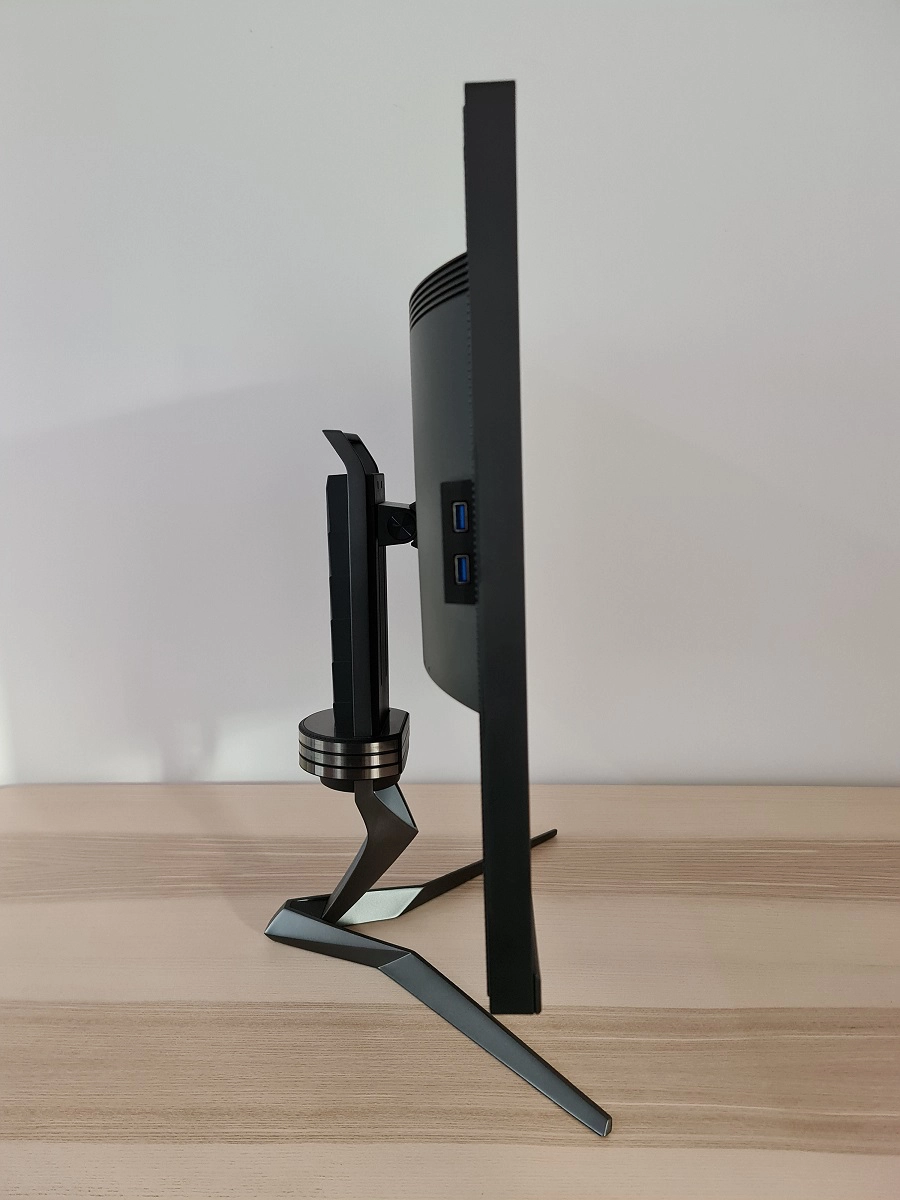
The rear of the monitor is mainly matte black plastic, with a few different textures used. The stand attaches centrally using a quick-release mechanism and can be replaced by an alternative VESA 100 x 100mm solution if preferred. Towards the bottom of the stand neck there’s a cable-tidy gap, above which there are 3 circular shiny silver ‘discs’ separated by matte black plastic. This is an interesting design feature but also functions as the swivel mechanism for the monitor. The top 2 ‘discs’ are actually one functional part, sliding over the bottom disc when you swivel the monitor. The ports face downwards and include; AC power input (internal power converter), 2 HDMI 2.0 ports, DisplayPort 1.4, 2 USB 3.0 ports (4 total, plus upstream) and a 3.5mm headphone jack. 2 x 2W speakers are also included, facing upwards. These offer basic and decidedly low-quality sound output. Useable if you really need to, but not something that will replace even a half-decent set of standalone speakers or headphones.
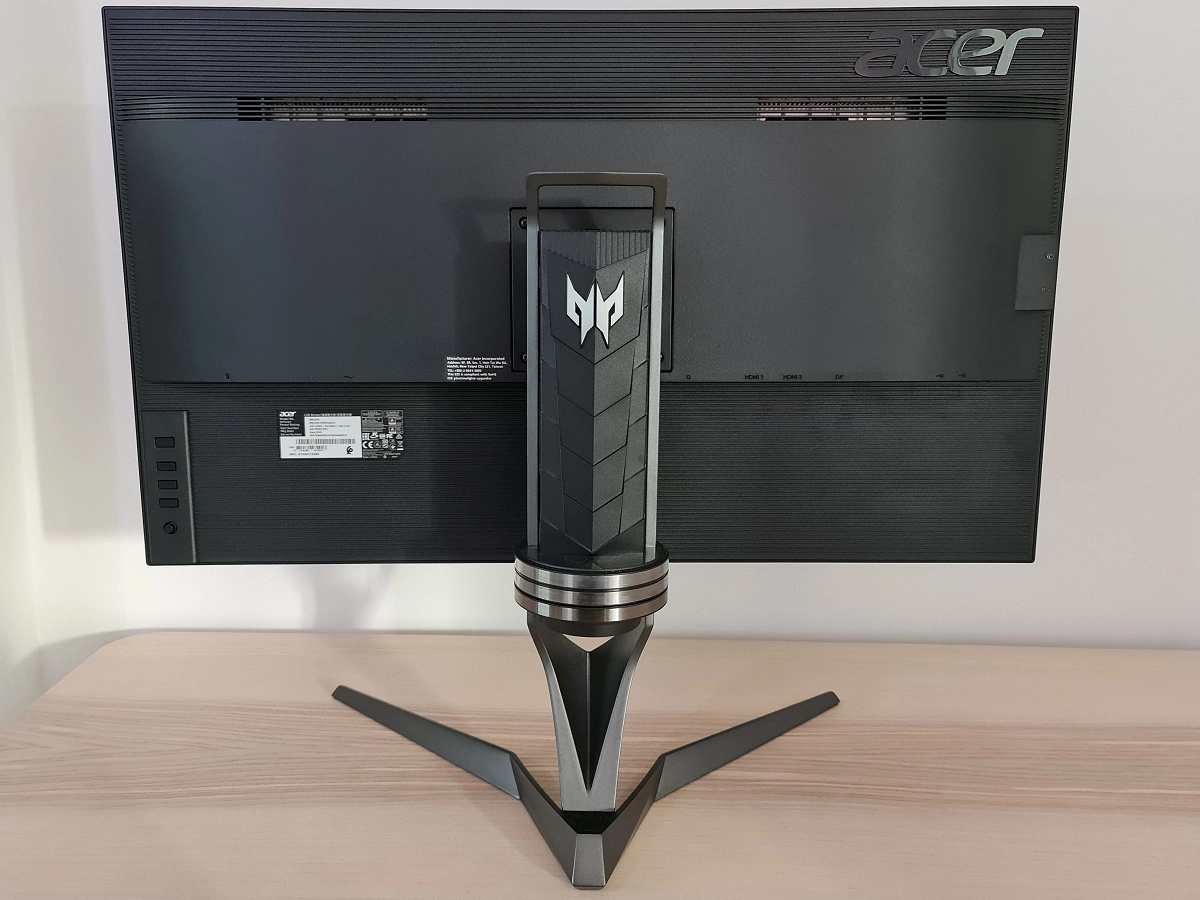
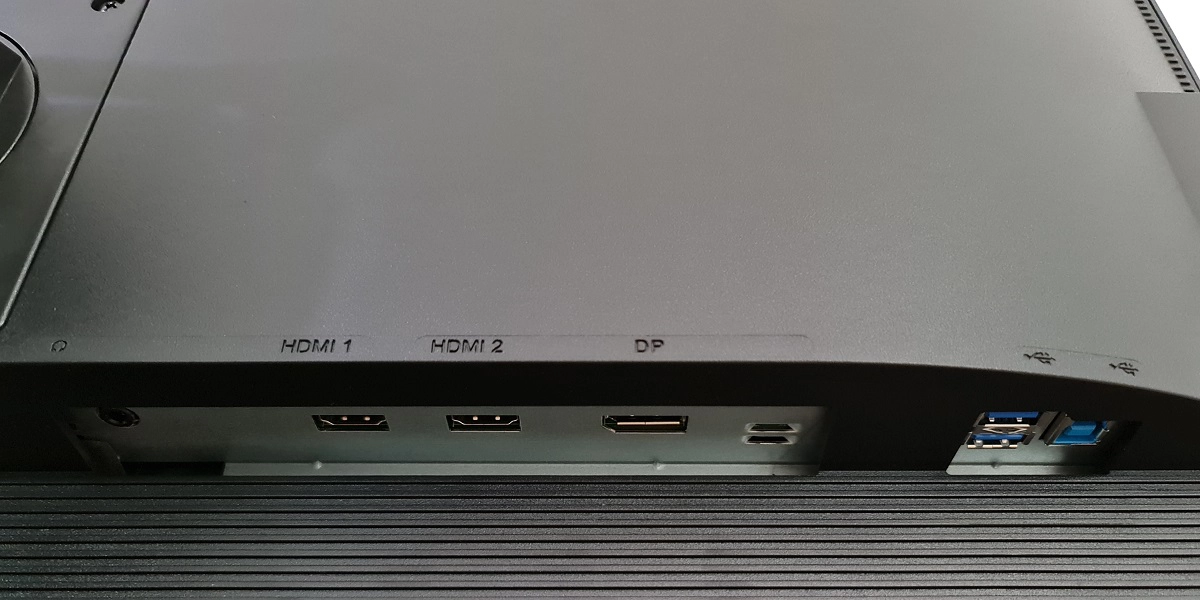
The full capability of the monitor including 2560 x 1440 @170Hz plus HDR and Adaptive-Sync can be leveraged via DP 1.4. This includes both AMD FreeSync and Nvidia’s ‘G-SYNC Compatible Mode’. Note that Acer incorrectly specifies ‘DP 1.2’ on some product pages, but the OSD confirms ‘DP 1.4’. This is further confirmed by the fact sufficient bandwidth is provided for a 10-bit Full Range RGB colour signal to be used alongside all of the aforementioned capabilities (resolution, refresh rate, HDR etc). HDMI 2.0 is limited to 144Hz and supports HDR, but not Adaptive-Sync. A power cable, HDMI cable, DP cable and USB 3.0 cable are included as standard. This can vary by region. The first and second images above show the refresh rates available when running at 1920 x 1080 (Full HD) via HDMI. When using DP, the 24Hz and 23Hz options are missing from the first list but 170Hz is selectable in the second. The third image shows the refresh rates selectable when running the native 2560 x 1440 (WQHD) resolution via DP. When using HDMI the same refresh rates can be used aside from 170Hz. The fourth image shows the ‘4k x 2k, 3840 x 2160’ downsampling mode that’s available when using HDMI. This is potentially useful for games consoles that don’t support a 2560 x 1440 signal but would accept a 3840 x 2160 signal.
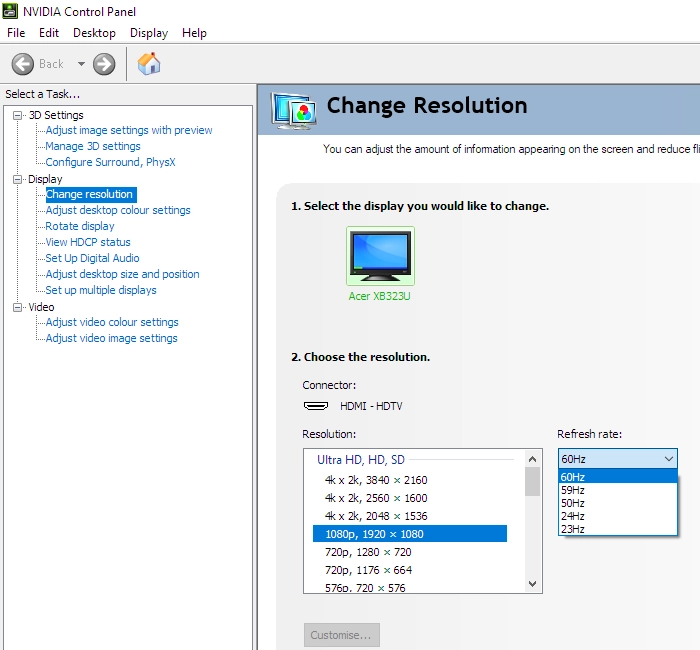
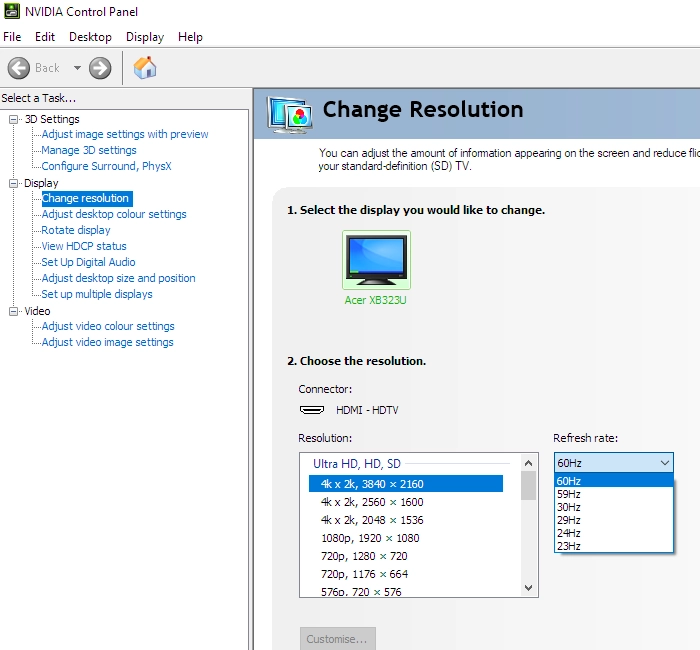
Note that 120Hz is listed as a ‘PC’ resolution for Full HD, rather than in the ‘Ultra HD, HD, SD’ list. Resolutions and refresh rates from the ‘Ultra HD, HD, SD’ list are referenced internally by monitors (in their EDID) as ‘TV’ resolutions. Our research suggests the Sony PS5 isn’t always able to ‘read’ refresh rates that aren’t stored as a ‘TV’ resolution. So you might be restricted to 60Hz on this monitor when using the PS5. A workaround would be to buy an HDMI EDID Emulator (Amazon link) which converts the signal into a format readable by the console. If you’re intending to use the monitor with the Xbox Series X/S, be aware that a small settings tweak may need to be made on the Xbox to ensure 120Hz is selectable. Details can be found in this post.
Calibration
Subpixel layout and screen surface
![]()
As shown above, the monitor uses the standard RGB (Red, Green and Blue) stripe subpixel layout. This is the default expected by modern operating systems such as Microsoft Windows and Apple MacOS. You needn’t worry about text fringing from non-standard subpixel layouts as a Mac user and don’t need to run ClearType as a Windows user. You may still wish to run through the ClearType wizard and adjust according to preferences, however. The subpixel layout and arrangement is normal and we had no subpixel-related concerns related to sharpness or text clarity on this model.
Testing the presets
Preset Mode Gamma (central average) White point (kelvins) Notes Gamma = 1.8 1.8 7068K Strange balance due to lack of overall depth from low gamma, with some strong underlying saturation in places due to wide gamut. Slight cool tint to image with a marginal green push. Gamma = 2.0 2.0 7035K As above, slightly more depth. Strong saturation overall. Gamma = 2.2 (Factory Defaults) 2.2 6983K A highly vibrant look with good shade depth and strong variety. Gamma = 2.4 2.4 6962K As above with extra depth. A striking look to some shades, appearing deeper than intended which is combined with strong saturation. Gamma = 2.6 2.6 6957K As above, yet more depth – far too much in places. Certainly an eye-catching look, but not appropriately balanced. Color Temp. = User 2.2 7668K As factory defaults with a stronger cool tint. Color Space = sRGB 2.2 7241K An sRGB emulation setting, restricting the colour gamut so it follows sRGB much more closely. Saturation is curtailed and sRGB content appears closer to the developer’s original intentions. Somewhat cool tint remains, not extreme. Many settings locked off including colour channels, but brightness is adjustable. Blue Light = 80% 2.2 6101K A weak Low Blue Light (LBL) setting. Warmer appearance to image compared to default, noticeable green cast as green channel remains relatively strong. Blue Light = 70% 2.2 6041K As above but slightly stronger blue light filtering effect and lower default brightness. Blue Light = 60% 2.2 5340K An effective LBL setting, image appears warm and green-tinted – your eyes adjust to some extent over time. Default brightness lowered slightly, can be reduced further to cut out more blue light. Blue Light = 50% 2.2 5125K The strongest LBL setting available, a highly effective setting with solid reduction in blue light output. Blue channel is very weak, red and green are relatively strong. The image appears warm with a green tint as a result, which is particularly striking before your eyes adjust. Default brightness further reduced but can again be manually adjusted. Test Settings (see below) 2.2 6519K The image is highly vibrant but otherwise nicely balanced with strong variety.
Out of the box the monitor provided an unmistakably vibrant image with strong saturation but good variety and strong consistency. The gamma tracking was appropriate, whilst the colour temperature was a touch on the cool side and the green channel slightly too strong. Imparting a mild green tint. This was all easy to correct, alongside the high default brightness. Some users might notice an initial red cast, particularly if comparing to a monitor with much less red energy from its backlight. This can be observed even if the colour temperature is >6500K. Your eyes should adapt to this in time, but if not reducing the ‘R Bias’ control slightly in the ‘Color’ section of the OSD might help. The graph below shows the gamma tracking under our ‘Test Settings’, with close tracking of the ‘2.2’ curve. Gamma behaviour was similar to this straight from the box on our unit. Given the intended uses for monitor, inter-unit variation and strong performance following OSD tweaking alone we will not be using any ICC profiles for this review or including any measurements or graphs using them. We wouldn’t recommend using them unless created for your specific unit using your own calibration device. But we appreciate some users still like to use profiles and some aspects such as gamut mapping for colour-aware applications can be useful. You can download our ICC profile for this model, which was created using our ‘Test Settings’ as a base. Note again that this ICC profile is not used in the review. The monitor also includes a Low Blue Light (LBL) setting appropriately named ‘Blue Light’. This can be set between ‘50%’ (maximum effect) and ‘80%’ (minimum effect) in increments of 10%. Reducing exposure to stimulating blue light in the hours leading towards bed is particularly important to aid a restful night’s sleep. This setting was effective, particularly at higher level (50% and 60%), significantly reducing blue light output from the monitor. As common for LBL settings, the green channel remains relatively strong, minimising the contrast hit from activating the setting. On the flipside, it imparts a green tint. Your eyes adjust to this to an extent over time, but never fully compensate. We used the strongest setting (‘Blue Light = 50%’) with reduced brightness for our own viewing comfort in the evenings, although not for any specific testing beyond that involving this specific setting. We assigned this to the ‘G3 – Sports’ preset so it could be easily activated and deactivated. Just be aware that if you do then then make manual adjustments to ‘Color Temp.’ afterwards, with what becomes the ‘User’ preset, you’d have to set up the ‘G3 – Sports’ preset again. It’s best to make use of the ‘G1’, ‘G2’ and ‘G3’ presets as much as possible and just switch between them as that will avoid you overwriting things without realising. We lowered brightness and made minor adjustments to colour channels for our ‘Test Settings’. Following these adjustments, the image appeared rich and natural with very good balance. It’s important to remember that individual preferences vary and that different units of the same model may require different adjustments. These settings are just a suggestion and won’t be optimal in all cases. Assume any setting not mentioned, including gamma and contrast, was left at default. We’ve also included the refresh rate used in Windows and our preferred ‘Over Drive’ setting for reference – although this is greyed out with Adaptive-Sync enabled. These settings only apply to SDR, HDR has separate settings associated with it (is far more restrictive) and is explored in the relevant section of the review. Brightness= 48 (according to preferences and lighting) Color Temp.= User R Gain= 50 G Gain= 43 B Gain= 39 Over Drive= Normal Adaptive-Sync= On (will grey out ‘Over Drive’) Refresh rate (Windows setting)= 170Hz An X-Rite i1Display Pro was used to measure the luminance of white and black using various settings on the monitor, including those found in the calibration section. From these values, static contrast ratios were calculated. The table below shows these results, with blue highlights indicating the results with HDR active at full brightness and under our ‘Test Settings’. Black highlights indicate the highest white luminance, lowest black luminance and highest contrast ratio recorded. Assume any setting not mentioned was left at default, with the exceptions already noted here or in the calibration section.

Gamma 'Test Settings'
Test Settings
Mode: Standard (becomes ‘User’ after modified)
Contrast and brightness
Contrast ratios
Monitor Settings White luminance (cd/m²) Black luminance (cd/m²) Contrast ratio (x:1) 100% brightness 412 0.39 1056 80% brightness (Factory Defaults) 335 0.32 1047 60% brightness 213 0.20 1065 40% brightness 154 0.15 1027 20% brightness 98 0.09 1089 0% brightness 44 0.04 1100 HDR = Auto* 733 0.63 1163 HDR = HDR-600* 736 0.07 10514 Gamma = 1.8 336 0.32 1050 Gamma 2.0 335 0.32 1047 Gamma = 2.4 335 0.32 1047 Gamma = 2.6 334 0.32 1044 Color Temp. = User 295 0.28 1054 Color Temp. = User (100% brightness) 414 0.39 1062 Color Space = sRGB 125 0.13 962 Blue Light = 80% 323 0.33 979 Blue Light = 70% 274 0.29 945 Blue Light = 60% 228 0.25 912 Blue Light = 50% 190 0.21 905 Test Settings 165 0.17 971
*HDR measurements were made using this YouTube HDR brightness test video, running full screen at ‘1440p HDR’ on Google Chrome. The maximum reading from the smallest patch size (measurement area) that comfortably covered the entire sensor area and colorimeter housing was used for the white luminance measurement, which was ‘4% of all pixels’ in this case. The black luminance was taken at the same point of the video with the colorimeter offset to the side of the white test patch, equidistant between the test patch and edge of the monitor bezel.
The average static contrast with only brightness adjusted was 1064:1, just slightly exceeding the specified 1000:1. The maximum contrast recorded was 1100:1, whilst we recorded 971:1 under our ‘Test Settings’. Not a bad result considering the fairly significant colour channel adjustments we made. The contrast dropped off further with some of the stronger ‘Blue Light’ LBL settings, as low as 912:1 using the strongest setting. If the green channel was reduced the contrast hit would’ve been more significant. A slight contrast hit was also observed using the ‘sRGB’ setting, which makes significant adjustments including clamping the gamut close to sRGB – at 962:1, by no means poor contrast. The maximum luminance recorded under SDR was 412 cd/m² and the minimum white luminance recorded was 44 cd/m². This provides a 368 cd/m² luminance adjustment range with a fairly low minimum and fairly bright maximum.
A higher brightness was recorded under HDR, 733 cd/m² using the ‘Auto’ setting and 736 cd/m² using the ‘HDR-600’ setting. A key difference is that the ‘HDR-600’ setting allows the monitor to use local dimming, with 16 zones in an arrangement described later. The ‘Auto’ setting gets a very slight contrast bump over SDR, simply because the measurement point for the black point was offset. And the luminance and indeed black point was slightly lower at that point vs. the centre of the screen. With the ‘HDR-600’ setting a contrast ratio of 10,514:1 was recorded which far exceeds the contrast under SDR. This is of course one measurement in a specific scenario – we explore the implications of this and the local dimming performance later on. A Dynamic Contrast setting called ‘ACM’ (Adaptive Contrast Management) can be used under SDR. This allows the backlight to adjust as a single unit (no local dimming) to changes in scene brightness. The brightness slider remains unlocked, but is ignored. This setting makes adjustments at a gradual to moderate pace based on scene brightness, but tended to offer high brightness even for mixed content with plenty of dark elements. As ever it’s a compromise and we prefer manual brightness control under SDR.
PWM (Pulse Width Modulation)
The XB323UGP does not use PWM (Pulse Width Modulation) to regulate backlight brightness at any level. Instead, DC (Direct Current) is used to moderate brightness. Under HDR with local dimming active (‘HDR-600’) we observed very low amplitude oscillation of the backlight, very different to distinct PWM and involving only very slight but still cyclical brightness changes. The backlight is therefore considered ‘flicker-free’, which will come as welcome news to those sensitive to flickering or worried about side-effects from PWM usage.
Luminance uniformity
Whilst observing a black background in a dark room, using our ‘Test Settings’, we observed some backlight bleed and clouding, mainly towards the bottom left region. It’s important to note that individual units vary when it comes to backlight bleed and clouding. The image below shows the results on our units, taken a sufficient distance back to eliminate ‘IPS glow’. This is most noticeable towards the bottom corners of the screen, from a normal viewing position. It appears as a cool bluish silver haze towards the bottom left and a warm and slightly orange haze towards the bottom right. It ‘blooms out’ from sharper viewing angles with hue depending on the angle, as demonstrated in the viewing angles video later. The luminance uniformity was variable. The brightest point recorded was ‘quadrant 5’ in the centre of the screen (164.9 cd/m²). The greatest deviation from this occurred at ‘quadrant 6’, to the right of centre (142.4 cd/m², which is 14% dimmer). The average deviation between each quadrant and the brightest point was 9.25%, which is reasonable. It’s important to remember that uniformity varies between individual units and you can also expect variation beyond the points measured. The contour maps below show these deviations graphically, with darker greys representing lower luminance and hence greater deviation from the brightest recorded point than lighter greys. Percentage deviations between each quadrant and the brightest point are also given. The SpyderX Elite was also used to analyse variation in the colour temperature (white point) for the same 9 quadrants. The deviation between each quadrant and the quadrant closest to the 6500K (D65) daylight white point target was analysed and a DeltaE value assigned. A DeltaE >3 represents significant deviation that most users could readily notice by eye. The colour temperature uniformity was moderate, with significant deviations recorded towards the left side. The highest deviation was DeltaE 4.0 towards the top left, which is not extreme but still significant. It’s again important to remember that individual units vary when it comes to uniformity and that deviation beyond the measured points should be expected. Due to how wide the gamut is, deviation in colour temperature can appear more exaggerated than these sorts of measurements might suggest as well. When viewing large patches of bright shade such as white, warm regions can appear quite intensely warm (red tint) and cool regions intensely cool (blue or ‘cool green’ tint). On our unit we noticed the regions where significant deviations were recorded, towards the top left in particular, appearing not just warm but somewhat red-tinted. It wasn’t extreme by any means and each individual unit is different, but it’s worth being aware of this when considering colour temperature deviation on models like this with very generous gamuts. The monitor provided a reasonable contrast performance on Battlefield V. With the static contrast as it is, you don’t get an impressive atmosphere or strong depth to dark shades, especially when viewing in dimmer lighting conditions. The static contrast still edges some IPS-type panels which ~200 – 300:1 lower. But there are some IPS-type models that offer stronger static contrast and when you compare to VA monitors the gap widens significantly. You also have ‘IPS glow’ to contend with – a moderate amount of this, but in-line with expectations for the panel type and size. This is clearest towards the bottom of the screen from a normal viewing position, but given the size of screen and depending on viewing position can also be observed further up. It tends to be clearest towards the bottom left corner due to the cool tint to the ‘glow’ in this region. In contrast to the more subdued warm and slightly orange glow towards the bottom right. This ‘glow’ lightens up content and eats away at atmosphere – it can be brought out more strongly if your unit suffers significant clouding or backlight bleed, you’re using a higher brightness or sitting closer to the screen. A real strength of IPS-type models like this is gamma consistency. Detail levels for dark content were largely appropriate throughout the screen, compared to TN or VA models where perceived gamma shifts greatly affects detail levels for dark content. Brighter content stood out nicely with decent ‘pop’ – this was aided by the very light matte screen surface as well, which prevented a layered appearance. There was just a light ‘misty’ graininess observed as well due to the reasonably smooth surface texture. Shadow of the Tomb Raider craves a strong contrast experience. There are plenty of dimly lit locations usually illuminated by a few point sources of light – such as flames or light seeping in through small openings in rocks. The contrast experience from the Acer was again reasonable but far from spectacular, especially in dimmer lighting conditions. The depth and atmosphere to these dark scenes was lacking when compared to some VA models in particular. ‘IPS glow’ again ate away at some atmosphere peripherally, creating a ‘bloom’ that lightens up the darkest shades. The strong gamma consistency was certainly a strength worth focusing on, though. Unlike on VA models you don’t have a central region of ‘black crush’ where dark shades appear too blended together and some extra unintended detail peripherally. And unlike on TN models you don’t have a clear detail gradient for dark content from top (high perceived gamma, far too little detail) to bottom (low perceived gamma, far too much detail). The screen surface was also quite agreeable, just a touch of ‘misty’ graininess but no clear layering in front of the image or a smeary look to lighter shades. We also made some observations using the film Star Wars: The Rise of Skywalker. As with Tomb Raider, this title has plenty of high-contrast scenes. Pulses of energy, flames and light sabers illuminating dark surroundings and suchlike. The monitor didn’t create a particularly cinematic atmosphere and if you’re expecting that, especially sitting in a dimly lit room, you’d best avoid the IPS panel type altogether. The performance was again better than some IPS-type models as the static contrast was at least close to the specified 1000:1, a bit under or a bit above depending on the settings used. The ‘IPS glow’ was again there in moderate doses, too. The strong gamma consistency was also there on the flipside and this is particularly important if you watch heavily compressed streamed content on platforms such as Netflix. Such content naturally contains ‘compression artifacts’. On some VA models but moreover lower down on TN models, the significantly reduced perceived gamma can bring out such details far too strongly. Giving a blocky or banded appearance. Here, they were appropriately blended due to the appropriate gamma handling and strong consistency. The Lagom tests for contrast allow specific weaknesses in contrast performance to be identified. The following observations were made. The monitor uses a Quantum Dot (QD) backlight solution to enhance the gamut, employing blue LEDs and a layer of red and green Quantum Dots. This creates much larger peaks of green and red light than you’d see on your typical standard gamut monitor. The red and moreover green peak from the QDs in this case are greater than the blue peak from the diode, at a normal white point and without extreme colour channel adjustment. These strong green and red peaks enhance the colour gamut whilst also creating a more balanced and less blue-biased spectral profile, potentially aiding viewing comfort. The Acer XB323UGP’s colour gamut (red triangle) was compared with the sRGB (green triangle) and DCI-P3 (blue triangle) reference colour spaces using our ‘Test Settings’, as shown in the first image below. The gamut fully covers sRGB with significant extension beyond. We measured 95% DCI-P3 coverage, with slight extension beyond for some red shades and significant extension beyond in the green to blue region of the gamut. The second image shows the monitor’s colour gamut (red triangle) compared to Adobe RGB (purple triangle). We recorded 100% Adobe RGB coverage with some extension beyond. This gamut is very generous, so for standard sRGB content outside of a colour-managed environment there’s a large dose of extra vibrancy and saturation. The monitor also offers an sRGB emulation setting, accessible by setting the ‘Color Space’ to ‘sRGB’ in the ‘Color’ section of the OSD. This cuts down the colour gamut so it follows sRGB much more closely, with only a small amount of under-coverage and no recorded over-extension (98% coverage). Unlike some sRGB emulation modes you can adjust brightness, although quite a few other settings including ‘Gamma’ and colour channels are locked and can’t be adjusted. This setting is useful for more faithful representation of content within the sRGB colour space even in non colour-managed applications and without profiling of the monitor. To maximise colour accuracy within the sRGB colour space, for colour-managed workflows, full calibration and profiling with a colorimeter or similar device using the full native gamut is recommended. The generous DCI-P3 and Adobe RGB coverage would also make the monitor suitable for work within those wider colour spaces. You may try the ICC profile featured in the calibration section which includes gamut mapping for colour-aware applications, but best results are always obtained by calibrating your own unit with your own hardware. Instead of using this ‘sRGB’ setting and putting up with the associated restrictions, AMD users can activate a flexible sRGB emulation setting via the graphics driver. This is done by opening ‘AMD Radeon Software’, clicking ‘Settings’ (cog icon towards top right) and clicking on ‘Display’. You should then ensure that the ‘Custom Color’ slider to the right is set to ‘Enabled’ and ‘Color Temperature Control’ set to ‘Disabled’. It may appear to be set this way by default, but the native rather than restricted gamut is likely in play. If that’s the case, simply switch the ‘Color Temperature Control’ slider to ‘Enabled’ then back to ‘Disabled’ to leverage the sRGB emulation behaviour. This setting is shown in the image below. The gamut below shows results using our ‘Test Settings’ with this driver tweak applied. The colour gamut now offers strong sRGB coverage (98%) with less extension beyond compared to natively. This is a useful setting if you’re an AMD user and wish to gain closer tracking of the sRGB gamut without profiling, including in applications that aren’t colour-managed. And you don’t wish to put up with restrictions associated with the monitor’s sRGB emulation setting. The monitor presented shades in a varied and highly vibrant way on Battlefield V. As is typical for SDR content, the game is designed with the sRGB colour space in mind. When the game is admired on a monitor with a wider colour gamut than that, things are represented in a more vibrant and saturated way. This saturation injection is different to what you’d get with a digital saturation boost, for example increasing the ‘Saturation’ levels in the monitor’s OSD. Or using Nvidia’s ‘Digital Vibrance Control’. Those digital adjustments pull shades closer to the edge of the gamut without expanding the gamut itself, so the most saturated shades displayed remain the same and less saturated shades appear more similar to them. That results in a loss of shade variety – in contrast, with the wide gamut of the Acer shade variety and appropriate spacing on the gamut is maintained. It was difficult to pinpoint particular ‘stand-out’ shades that looked vibrant as there were many examples here. The sky blues in some scenes were particularly eye-catching, there were some very deep forest greens but also yellowish greens where the yellow hue was too strong. This is commonly observed on wide gamut models and certainly the case here given how generous the gamut coverage was in this region. There were some very intense fiery reds and oranges for flames, too. And red hues which were brought out too strongly in places, such as the reddish browns of certain tree trunks, patches of earth and some skin tones. Shadow of the Tomb Raider told a similar story. Things again appeared highly vibrant, but also nicely varied. The natural environments showcased a good range of very lush looking deep greens as well as some more muted shades. Although the more muted shades were more saturated than intended, including the yellow components being brought out too strongly for yellowish greens. The strong push for some red shades was also evident in places – Lara Croft’s hair appeared a bit too reddish and her skin overly tanned. There were some very eye-catching flashes of vibrancy in places, including some intense red and orange flames and brilliant blue flowers. Some users will really enjoy this vibrant and saturated look to things, as showcased on these two titles – and it’s something people are more accustomed to from wider gamuts appearing on the screen of smartphones, TVs and other devices. For those who prefer a ‘rich and natural’ aesthetic, the sRGB emulation setting mentioned earlier or the more flexible AMD driver tweak for AMD GPU users might be worth exploring. Whichever path you choose with this monitor, the strong colour consistency from the IPS-type panel helps maintain that level of richness and vibrancy well throughout the screen. You don’t get the saturation losses or jumps in shade depth that occur on TN or VA models depending on where on the screen you’ve observing a given shade. Last but not least, we made observations using various episodes of the animated TV series Futurama. The main reason we like to use this title is that it has large areas of individual shade and is therefore a pretty brutal test for monitor colour consistency. Making weaknesses in that respect very readily apparent. The Acer performed very well in that respect, without the sort of saturation shifts you’d observe on TN or VA models. The strong saturation and vibrancy was evident, with many shades appearing deep and ‘full’. There were some impressively eye-catching neon greens, pinks and yellows as well. The pastel shades appeared decidedly less muted than they should, but still appeared muted relative to the deep and neon shades. The look was therefore both eye-catching and varied, although not as the developers intend. Personal preferences naturally come into play, as with the observations you’d make in game or just on the desktop more broadly. The image below shows a printed reference sheet of 24 ‘sRGB’ shades, included as part of the Datacolor SpyderCHECKR 24 package. The screen is displaying reference photographs of this printed sheet, in both the same order as printed (right side) and reverse order (left side). The camera is mounted slightly above centre so that the image is representative of what the eye sees from an ergonomically correct viewing position. This, coupled with the inclusion of a flipped version of the shade sheet, allows both accuracy and colour consistency to be visually assessed. Bracketed numbers in our analysis refer to shades on the printed sheet or right side of the screen if they’re ordered consecutively from top left to bottom right. Interlaced lines visible in some places on the image are moiré from the camera, not observed on the monitor itself. Note that there is always some disparity between how emissive objects (monitor) and non-emissive objects (printed sheet) appear. The representation of shades in this image depends on the camera and your own screen, it’s not designed to show exactly how the shades appear in person. It still helps demonstrate some of the relative differences between the original intended sRGB shade and what the monitor outputs, however. Full profiling and appropriate colour management on the application would provide a tighter match, our intention here is to show what can be expected in a non colour-managed environment. Lagom’s viewing angle tests help explore the idea of colour consistency and viewing angle performance. The following observations were made from a normal viewing position, eyes ~70cm from the screen. On some monitors, particularly but not exclusively those with high refresh rates, interlace patterns can be seen during certain transitions. We refer to these as ‘interlace pattern artifacts’ but some users refer to them as ‘inversion artifacts’ and others as ‘scan lines’. They may appear as an interference pattern, mesh or interlaced lines which break up a given shade into a darker and lighter version of what is intended. They often catch the eye due to their dynamic nature, on models where they manifest themselves in this way. Alternatively, static interlace patterns may be seen with some shades appearing as faint horizontal or vertical bands of a slightly lighter and slightly darker version of the intended shade. We did not observe any static interlace patterns on this model. Under certain conditions we observed some dynamic ‘interlace pattern artifacts’, fine interlaced vertical lines during movement or when scanning our eyes across the screen in a certain way. They weren’t readily apparent unless the refresh rate was ~100Hz or below, becoming more noticeable at refresh rates of ~60Hz or lower. Even at relatively low refresh rates including 60Hz they were still quite faint and easy to ignore, though. Unless you’re sitting quite close to the screen and are sensitive to them. Most users will either not notice them or not find them bothersome, even at low refresh rates like 60Hz. A small utility called SMTT 2.0 was used alongside a sensitive camera to analyse the latency of the XB323U GP, with over 30 repeat readings taken to help maximise accuracy. Using this method, we calculated 3.79ms (around 2/3rds of a frame at 170Hz) of input lag. The input lag measured was identical with ‘Ultra-Low Latency’ enabled or with Adaptive-Sync enabled, which greys this setting out and forces it on. The input lag measured here wasn’t significantly affected by refresh rate. It’s influenced by both the element you ‘see’ (pixel responsiveness) and the main element you ‘feel’ (signal delay). It indicates a low signal delay which most users should be happy with. Note that we don’t have the means to accurately measure input lag with Adaptive-Sync active in a VRR environment or with HDR active in an HDR environment. Our article on responsiveness explores some of the key concepts related to monitor responsiveness. Chief amongst these factors is the notion of perceived blur. This is contributed to by both the pixel responsiveness of the monitor and the movement of your eyes as you track motion on the screen. Perceived blur due to eye movement is the dominant form of perceived blur observed on a modern monitor, but both factors play an important role. We also look at a photography technique called ‘pursuit photography’, which uses a moving rather than static camera to capture motion in a way that reflects both aspects of perceived blur. This contrasts with static photos or videos which only reflect weaknesses in pixel responsiveness. The images below are pursuit photographs taken using the UFO Motion Test for ghosting, with the UFO moving across the screen from left to right at a frame rate matching the refresh rate of the display. The test is set to run at its default speed of 960 pixels per second, which is a practical speed for such photographs and sufficient to highlight any weaknesses. The monitor was tested at 60Hz (directly below), 120Hz, 144Hz and 165Hz using all ‘Over Drive’ pixel response time settings. The ‘Over Drive’ is locked using Adaptive-Sync and optimised just slightly differently, so this was tested separately. This behaviour isn’t influenced by the ‘Over Drive’ setting used before enabling Adaptive-Sync and can’t be changed using the Display Widget software, either. All rows of the UFO Motion Test were used, highlighting a range of pixel transitions between various shades. The final columns show some reference screens for comparison, where possible, using what we deem to be their optimal pixel response time settings. The first reference screen is the ViewSonic XG270QC, a 27” high refresh rate VA offering. The second reference is the ViewSonic XG270QG, a responsive IPS model. Note that wavy patterns surrounding some UFOs in the background are slight image retention. This was only observed during this test and is something we’ve seen on various monitors before. It disappeared after using the monitor normally for several minutes. On Battlefield V the monitor provided a fluid experience, with the frame rate keeping pace with the 170Hz refresh rate. Compared to a 60Hz monitor (or this monitor running at 60Hz), the monitor is outputting nearly 3 times as much visual information every second. Coupled with the low input lag, this provided an excellent ‘connected feel’ – the fluidity and precision that’s felt when interacting with your character on the game. As demonstrated earlier with Test UFO, there’s also a significant decrease in perceived blur due to eye movement. This gives a significant competitive edge in titles like this and is something that can improve the general experience and for some viewing comfort even during non-competitive gaming. The edge in ‘connected feel’ and decrease in perceived blur compared to the 144Hz (at 144fps) experience was not dramatic, but is still something we could notice and appreciate. Sensitivity to these things varies amongst individuals and we’d still say the initial increase from 60Hz to 120Hz or so, at suitable frame rates, is more dramatic. The monitor also provided an impressively strong pixel response performance. The vast majority of pixel transitions were performed very well, so they didn’t significantly increase perceived blur even at the relatively demanding 170Hz refresh rate. There were the faintest whiffs of ‘powdery’ trailing for a select few transitions. For example, those involving very bright shades such as white against medium-dark backgrounds. But this was too faint to stand out or have a clear negative impact on overall perceived blur. In this respect the monitor performed better than some already rather fast IPS-type models such as the ViewSonic XG270QG and similar models sharing the panel. And they’re no slouches. Disabling Adaptive-Sync and sticking with the ‘Over Drive = Normal’ setting didn’t have any real impact on this ‘powdery trailing’, but it’s such a minor thing either way that it would be splitting hairs to even compare these two settings. There was no significant overshoot to speak of, just a little bit of bright ‘halo’ trailing in places that’s slightly lighter than the object or background shade. For example a light metal post against a bright sky. We didn’t find this eye-catching at all. Disabling Adaptive-Sync slightly increases overshoot, but this remains relatively light and something most users would find unbothersome or even unnoticeable. The monitor provided a similarly impressive experience on Shadow of the Tomb Raider. No real issues of note, just a very convincing 170Hz performance. Just a whiff of overshoot or powdery trailing in places, but this was too slight to draw in the eye or detract from the gameplay. Things were impressively well-tuned with Adaptive-Sync enabled, whilst disabling it and sticking to the ‘Normal’ setting provided a largely similar experience. Differences that most would struggle to spot, such as a slight increase in overshoot but nothing substantial. We also observed movie content at a range of frame rates, including ~24 – 30fps and 60fps content. There were no clear weaknesses here, with the visual fluidity limited by the frame rate itself rather than the monitor. As an Amazon Associate I earn from qualifying purchases made using the below link. Where possible, you’ll be redirected to your nearest store. Further information on supporting our work. AMD FreeSync is a variable refresh rate technology, an AMD-specific alternative to Nvidia G-SYNC. Where possible, the monitor dynamically adjusts its refresh rate so that it matches the frame rate being outputted by the GPU. Both our responsiveness article and the G-SYNC article linked to explore the importance of these two elements being synchronised. At a basic level, a mismatch between the frame rate and refresh rate can cause stuttering (VSync on) or tearing and juddering (VSync off). FreeSync also boasts reduced latency compared to running with VSync enabled, in the variable frame rate environment in which it operates. FreeSync requires a compatible AMD GPU such as the Radeon RX 580 used in our test system. There is a list of GPUs which support the technology here, with the expectation that future AMD GPUs will support the feature too. The monitor itself must support ‘VESA Adaptive-Sync’ for at least one of its display connectors, as this is the protocol that FreeSync uses. The XB323U GP supports FreeSync via DP on compatible GPUs. Note that HDR can be activated (at the same time as FreeSync) via DP 1.4. You need to make sure ‘Adaptive-Sync’ is set to ‘On’ in the ‘Gaming’ section of the OSD. On the GPU driver side recent AMD drivers make activation of the technology very simple. You should ensure the GPU driver is setup correctly to use FreeSync, so open ‘AMD Radeon Software’, click ‘Settings’ (cog icon towards top right) and click on ‘Display’. You should then ensure that the first slider, ‘Adaptive-Sync Compatible’ is set to ‘Enabled’ as shown below. Note that the driver doesn’t specifically refer to this as ‘FreeSync’. This is just a technicality – the monitor isn’t officially FreeSync certified, but it doesn’t affect how the monitor performs in its VRR window. The top image shows the monitor connected by DP and the bottom image by HDMI. To configure VSync, open ‘AMD Radeon Software’. Click ‘Settings’ (cog icon towards top right) and click ‘Graphics’. The setting is listed as ‘Wait for Vertical Refresh’. This configures it globally, but if you wish to configure it for individual games click ‘Game Graphics’ towards the top right. The default is ‘Off, unless application specifies’ which means that VSync will only be active if you enable it within the game itself, if there is such an option. Such an option does usually exist – it may be called ‘sync every frame’ or something along those lines rather than simply ‘VSync’. Most users will probably wish to enable VSync when using FreeSync to ensure that they don’t get any tearing. You’d therefore select either the third or fourth option in the list, shown in the image below. Above this dropdown list there’s a toggle for ‘Radeon Enhanced Sync’. This is an alternative to VSync which allows the frame rate to rise above the refresh rate (no VSync latency penalty) whilst potentially keeping the experience free from tearing or juddering. This requires that the frame rate comfortably exceeds the refresh rate, not just peaks slightly above it. We won’t be going into this in detail as it’s a GPU feature rather than a monitor feature. *If you click on ‘Display Specs’ in the ‘Display Options’ screen that’s shown in the first image above, it lists 48 – 170Hz as the ‘AMD FreeSync Refresh Rate’ at the bottom. In our testing the floor of operation appeared to be 55Hz (55fps) rather than 48Hz (48fps) at 170Hz. Or 52Hz (52fps) if the monitor was set to 120Hz and 50Hz (50fps) if set to 100Hz. That’s when LFC appeared to kick in as tested in various scenarios. We used this monitor on various game titles with FreeSync enabled. As usual, the experience was very similar on all of these titles. If any issues were identified on one title but not another, it would also indicate an issue with the game or GPU driver rather than the monitor. For simplicity we’ll just use one title as an example here; Battlefield V. The flexibility offered with the graphics settings on the game allows a broad range of refresh rates to be tested. The Radeon RX 580 used for this testing isn’t the most capable card out there, so it’s very difficult to maintain a solid 170fps at the WQHD resolution. As such, dips below this are all but inevitable. Without FreeSync enabled, these dips result in obvious tearing (VSync disabled) or obvious stuttering (VSync enabled). Obvious to us, at least, and others sensitive to such things. We appreciated having such disruptions removed by allowing FreeSync to do its thing. As frame rate dipped a fair bit, let’s say to 100fps or so, there was a drop off in ‘connected feel’ as well as an increase in perceived blur that accompanied the loss of frame rate. This isn’t something FreeSync will correct, the frame rate reduction is still there all the same. However; the lack of tearing and stuttering from frame rate and refresh rate mismatches could still be appreciated. The monitor lacks variable overdrive, meaning the pixel overdrive is best tuned to the maximum refresh rate supported by the monitor (170Hz). As the refresh rate drops, alongside frame rate in this case, there is an ever-increasing level of overshoot. The pixel response times aren’t slackened off as they ideally would be. By around 100fps this was certainly more noticeable than at significantly higher frame rates, with some bright ‘halo’ trailing in places that might catch the eye at times. We certainly wouldn’t call this extreme, however. As frame rate dipped further and was comfortably into the double digits, closer now to 60fps, this overshoot increased and became eye-catching in places. We wouldn’t describe it as extreme, but as we pointed out earlier setting overdrive to ‘Off’ would work better in such situations. Yet you don’t have that flexibility with Adaptive-Sync active. The way things work there is therefore not ideal, but for most will be quite acceptable – more so if most of the time is spent in the triple digits for frame rate. The drop off in ‘connected feel’ and increased perceived blur was also significant by this stage. When frame rate dipped below the floor of operation for the monitor, which appeared to be 55Hz (55fps) in our testing with 170Hz selected, LFC (Low Framerate Compensation) kicked in. This kept tearing and stuttering at bay by ensuring the refresh rate of the monitor stuck to a multiple of the frame rate. There was a bit of stuttering when LFC activated or deactivated, which is something we always observe with this technology. But if you’re only occasionally passing the boundary, it isn’t something to worry about. It could be annoying if you’re frequently passing the boundary, though. As noted earlier, AMD FreeSync makes use of Adaptive-Sync technology on a compatible monitor. As of driver version 417.71, users with Nvidia GPUs (GTX 10 series and newer) and Windows 10 can also make use of this Variable Refresh Rate (VRR) technology. When a monitor is used in this way, it is something which Nvidia refers to as ‘G-SYNC Compatible’. The Acer is amongst models which are specifically validated as G-SYNC compatible, which means it has been specifically tested by Nvidia and passes specific quality checks. With the XB323U GP, you need to connect the monitor up via DisplayPort and enable ‘Adaptive-Sync’ in the ‘Gaming’ section of the OSD. When you open up Nvidia Control Panel, you should then see ‘Set up G-SYNC’ listed in the ‘Display’ section. Ensure the ‘Enable G-SYNC, G-SYNC Compatible’ checkbox and ‘Enable settings for the selected display model’ is checked as shown below. Press OK, then turn the monitor off then on again so that it re-establishes connection – the technology should now be active. Our suggestions regarding use of VSync also apply, but you’re using Nvidia Control Panel rather than AMD Radeon Software to control this. The setting is found in ‘Manage 3D settings’ under ‘Vertical sync’, where the final option (‘Fast’) is equivalent to AMD’s ‘Enhanced Sync’ setting. You’ll also notice ‘G-SYNC Compatible’ listed under ‘Monitor Technology’ in this section, as shown below. Make sure this is selected (it should be if you’ve set everything up correctly in ‘Set up G-SYNC’). On an ideal monitor, HDR (High Dynamic Range) involves the simultaneous display of very bright light shades and very deep dark shades. The monitor should also be able to display a very broad range of shades between these extremes, including highly saturated and vivid shades alongside more muted ones. The monitor would ideally support per-pixel illumination (e.g. backlightless technology such as OLED) or failing that offer a very large number of dimming zones with precise control. A solution such as FALD (Full Array Local Dimming) with a good number of dimming zones, for example. This would allow some areas of the screen to show high brightness whilst others remain very dim. Colour reproduction is also an important part of HDR, with the ultimate goal being support for a huge colour gamut, Rec. 2020. A more achievable near-term goal is support for at least 90% DCI-P3 (Digital Cinema Initiatives standard colour space) coverage. Finally, HDR makes use of at least 10-bit precision per colour channel, so its desirable that the monitor supports at least 10-bits per subpixel. The HDR10 pipeline is the most widely supported HDR standard used in HDR games and movies. And HDR10 is what’s supported here. Unlike most HDR-capable monitors, the Acer XB323U GP does not automatically switch into its HDR operating mode when an HDR colour signal is detected. You must do this manually – there are a few ways to do it, but we’d recommend setting ‘HDR’ to ‘Auto’ or ‘HDR-600’ in the ‘Picture’ section of the OSD. Inconveniently, other activation methods will set this to ‘Auto’ rather than ‘HDR-600’ (the latter being our preferred setting, as explored shortly). As of the latest Windows 10 update, relevant HDR settings in Windows are found in ‘Windows HD Color settings’ which can be accessed via ‘Display settings’ (right click the desktop). Most game titles will activate HDR correctly when the appropriate in-game setting is selected. A minority of game titles that support HDR will only run in HDR if the setting is active in Windows as well. Specifically, the toggle which says ‘Play HDR games and apps’. If you want to view HDR movies on a compatible web browser, for example, you’d also need to activate the ‘Stream HDR Video’ setting. These settings are shown below. Also note that there’s a slider that allows you to adjust the overall balance of SDR content if HDR is active in Windows. This is really just a digital brightness slider, so you lose contrast by adjusting it. Under HDR you lose access to many adjustments in the OSD, including gamma and colour channels. We’d recommend only activating HDR in Windows if you’re about to specifically use an HDR application that requires it, and have it deactivated when viewing normal SDR content on the monitor. For simplicity we’ll simply focus on two titles for this section; Battlefield V and Shadow of the Tomb Raider. We’ve tested both titles on a broad range of monitors under HDR and we know they represent a good test for monitor HDR capability. The experience described here is largely dictated and limited by the screen itself. Although our testing here is focused on HDR PC gaming using DisplayPort, we made similar observations when viewing HDR video content on the Netflix app. There are some additional points to bear in mind if you wish to view such content. We also made observations using HDMI, which would be used when viewing HDR content on an HDR compatible games console for example, and things were very similar. Testing on both our Nvidia and AMD GPUs showed that the HDR implementation was similar in both cases, too. As usual for HDR, the settings available in the monitor are greatly restricted, including brightness being greyed out and colour channels being locked off. A sharpness filter called ‘Super Sharpness’ (found in the ‘Picture’ section of the OSD) is enabled by default. It’s usual for such a filter to be applied in HDR implementations to help accentuate some of the contrast and shade variety advantages of HDR. But you can disable it as we preferred doing for a more natural look. The Acer XB323U GP is VESA DisplayHDR 600 certified. This is a ‘mid-range’ certification level for HDR and offers some significant improvements compared to the more basic VESA DisplayHDR 400 standard. A particularly important aspect of the DisplayHDR 600 certification that’s lacking with DisplayHDR 400 is that it necessitates local dimming on the backlight. As we explored in the contrast section, this model offers 16 dimming zones which provides a situational edge in contrast. More specifically, it has an edge-lit arrangement with 16 individually addressable LED clusters located along the bottom edge of the monitor. Light guides are used to split the screen into 16 dimming zones, as vertical ‘bands’ running along the screen. To use this functionality, ‘HDR’ needs to be set to ‘HDR-600’ in the ‘Picture’ section of the OSD. If it’s set to ‘Auto’ then no local dimming is used and the monitor sticks to a high brightness setting without Dynamic Contrast. The non-contrast HDR attributes remain intact. You need to be running with an HDR signal to use the local dimming as well, you can’t enforce it under SDR. We much preferred using the ‘HDR-600’ setting so will be focusing on that for the rest of this section. The DisplayHDR 600 level also requires at least 90% DCI-P3 colour gamut coverage, which the Acer very comfortably exceeded with a recorded gamut of 95% DCI-P3 and significant extension beyond DCI-P3 in some regions. This is shown in the graphic below, which featured earlier in the review. The red triangle shows the monitor’s colour gamut, the blue triangle DCI-P3 and green triangle sRGB. The colour gamut provides a decent match to the DCI-P3 near-term target game developers have in mind for HDR content, plus a bit of a push beyond towards the longer-term Rec. 2020 target in some regions. The colour representation under HDR was pleasing, with an excellent variety of shades and appropriate saturation levels maintained throughout the screen. There was an impressive array of lush greens alongside more muted pastel and minty green shades. And a nice array of rich (but nor ‘overdone’) earthy browns. The depth to some of these shades was beyond what we’d typically see under HDR on a monitor, even one with decent DCI-P3 coverage – but the excessive red hues for reddish browns or excessive yellow hues for yellowish greens we observed under SDR were thankfully absent. This gave the environments on both titles an enticing look – lively but still natural. Where the developers intended strong saturation to be shown, the monitor certainly delivered. Roaring fires showcased some impressively rich yellows and oranges, without being overpowered by the reddish oranges we saw under SDR. There were some exceptionally eye-catching blue flowers and colourful painted pottery on Shadow of the Tomb Raider, too, showcasing some shades that are well beyond the confines of sRGB and in some cases beyond DCI-P3 as well. This scene highlighted the enhanced precision (10-bit colour) with some very fine and natural-looking gradients – including the light streaming in from above and the mist surrounding that area. The definition of shaded areas and natural appearance of those was also improved. This scene was also good at highlighting the advantages of local dimming on this monitor, alongside the powerful backlight and relatively high luminance levels it can pump out. The glint of light on the water was immediately eye-catching, as was the bright light streaming in from above. The dimming zones covering such content were fired up to very high levels, whilst dimming zones covering the more muted content such as the mixed vegetation and shaded areas of water were much dimmer. The result was bright elements that stood out very nicely without compromising the entire scene. Obviously 16 dimming zones isn’t a huge number to have on such a large screen, so the precision here is limited. Some darker shades are dragged up so they’re brighter than they should be and this shifts around the screen as the scene changes. Focusing on predominantly dark scenes with some brighter shades mixed in reveals these shortcomings quite clearly, with the depth of some of the dark shades clearly raised above what it should be for large sections of the screen. But some shades still remain significantly deeper than they would if the entire backlight was lit up as strongly as those bright dimming zones. It’s a nice situational boost in contrast, in our view, giving a more believable look to daylight scenes and helping bright elements stand out better with darker surroundings. It’s just part of a relatively strong overall HDR performance from the Acer. It can’t perform miracles, but it’s a good few steps beyond what you usually get from the HDR experience of a monitor. The HDR experience using Shadow of the Tomb Raider as an example is explored in the section of video review below. This video section includes some discussion of our HDR experiences on Netflix, which we enjoyed using with HDR enabled on the monitor as well. With a 2560 x 1440 (WQHD) resolution spread across a 32” screen, the pixel density of the monitor is 91.79 PPI (Pixels Per Inch). That’s somewhat lower than the pixel density of a 27” WQHD model (108.79 PPI) and vastly lower than a 32” ‘4K’ UHD model (137.68 PPI). You don’t get the same clarity and detail potential as these tighter pixel densities, with a particular gulf compared to the UHD screens of this size. But the Acer has the same pixel density as a 24” Full HD monitor, which many users are quite comfortable with. It’s by no means a poor pixel density and it’s really at a level that many users will be happy with in terms of detail and clarity plus the relative size of UI elements and text without scaling. The size of the screen is also attractive in terms of creating an immersive experience – we found it engrossing from our preferred viewing distance of ~70cm (or a bit further back depending on seating position and posture). But didn’t find it overwhelming. The images below give an idea of the desktop real-estate and multi-tasking potential that’s offered by the screen. It’s in no way an accurate representation of how the screen is to view in person, but provides a nice visual indication of how much information you can cram onto the screen. It may be desirable or indeed necessary to run the monitor below its native 2560 x 1440 (WQHD) resolution. Perhaps for performance reasons, or because a system such as a games console is being used that doesn’t support the WQHD resolution. The monitor provides scaling functionality via both DP and HDMI. It can be run at resolutions such as 1920 x 1080 (Full HD) and can use an interpolation (scaling) process to map the image onto all pixels of the screen. The monitor only supports interpolation at up to 60Hz, at higher refresh rates the GPU or system would need to handle the scaling process. To ensure the monitor rather than GPU is handling the scaling process, as a PC user, you need to ensure the GPU driver is correctly configured so that the GPU doesn’t take over the scaling process. For AMD GPU users, the driver is set up correctly by default to allow the monitor to interpolate where possible. Nvidia users should open Nvidia Control Panel and navigate to ‘Display – Adjust desktop size and position’. Ensure that ‘No Scaling’ is selected and ‘Perform scaling on:’ is set to ‘Display’ as shown in the following image. The monitor offers various scaling settings under ‘Wide Mode’ in the ‘System’ section of the OSD: ‘Full’, ‘Aspect’ and ‘1:1’. The ‘Full’ setting will make sure all 2560 x 1440 pixels of the screen are active, whilst the ‘Aspect’ setting will use as many pixels whilst maintaining the aspect ratio of the source resolution. A black border will fill out any unused pixels. The ‘1:1’ setting is a pixel mapping feature which will only use the pixels called for in the source resolution and display a black border around the image. These scaling settings are demonstrated in the OSD video. When running the 1920 x 1080 (Full HD) resolution and using interpolation on the monitor, the image appears noticeably softer than it would on a native Full HD screen of this size. The pixel density is admittedly quite poor on such a large Full HD screen, but the lack of clarity to textures and lack of definition of object edges in comparison to this was still noticeable. Activating ‘Super Sharpness’ in the ‘Picture’ section of the OSD offset this softening quite effectively, although things appeared somewhat filtered and over-sharpened. This is less apparent if sitting a little way back from the monitor, perhaps over 1m or so. This is better than some interpolation processes we’ve seen, but we’ve seen better and more flexible implementations as well. Having various adjustable sharpness levels can certainly help out when it comes to interpolation rather than a single fixed setting. As usual, if you’re running the monitor at 2560 x 1440 and viewing 1920 x 1080 content (for example a video over the internet or a Blu-ray, using movie software) then it is the GPU and software that handles the upscaling. That’s got nothing to do with the monitor itself – there is a little bit of softening to the image compared to viewing such content on a native Full HD monitor, but it’s not extreme and shouldn’t bother most users. The video below shows the monitor in action. The camera, processing done and your own screen all affect the output – so it doesn’t accurately represent what you’d see when viewing the monitor in person. It still provides useful visual demonstrations and explanations which help reinforce some of the key points raised in the written piece. The engrossing nature of a ~32” screen like the Acer XB323U GP is very attractive to some, whilst the 2560 x 1440 (WQHD) resolution provides a comfortable pixel density. Not a spectacular one by any means, but similar to a 24” Full HD screen which many are comfortable with. It’s a resolution that isn’t overly demanding on mid-range GPUs, whilst providing a nice amount of desktop real-estate. Unlike many competing models, the screen on this one is flat rather than curved, which some will welcome. The monitor provided excellent ergonomic flexibility including a fairly generous amount of height adjustment and the ability to pivot the screen. The stand was solidly constructed, with a powder-coated metal finish and sculpted design. It gave a certain reassuring weight and robustness to the overall package. The contrast was in-line with our expectations for the panel type and indeed the panel specifications. The static contrast was still a bit higher than some IPS-type models, but far from the main strength of the monitor. Without a high static contrast ratio and with ‘IPS glow’ eating away at the atmosphere when observing darker content under dimmer lighting. The screen surface had a ‘light misty’ graininess to it, but didn’t offer a layered appearance in front of the image. This is what we’d classify as ‘very light’ matte anti-glare, preserving clarity and vibrancy well. Speaking of vibrancy, that’s something this model delivered in droves. The colour gamut was very generous indeed, much more so than you might think if simply looking at DCI-P3 coverage and comparing that to other models. Plenty of extension beyond even that gamut in some regions, full Adobe RGB coverage and a bit beyond. This gave sRGB content a clearly saturated and highly vibrant look, which suits some but not others. It also provides a good spread of gamuts you can use if profiling the monitor for colour-critical purposes. The strong colour-consistency also aided things there as well as improving the overall impression of the image, without clear saturation shifts at different points of the screen. For those who prefer sRGB content such as games to look more as the developers intend, an sRGB emulation setting is included. This cut down the gamut appropriately and didn’t lock off brightness control as some such settings do. The HDR support was a good step above what most monitors offer. The monitor includes 16 dimming zones which were highly reactive and responded readily to significant changes in scene brightness for that particular zone. Whilst this isn’t sufficient to allow the monitor to display intricate mixtures of light and dark and is a tiny number compared to the ~3.7 million pixels of the monitor, it still gave a noticeable situational boost in contrast. The backlight was powerful enough to pump out over 700 cd/m² – with local dimming in place, the brightest content appeared very eye-catching without the dimmer areas appearing as ‘flooded’ as they otherwise would. The generous colour gamut was also put to good use under HDR, delivering a good dose of vibrancy where it should be whilst keeping more natural and pastel shades appropriately muted. A convincing 170Hz performance was also delivered by the monitor, with fast and well-tuned pixel responses and low input lag helping round things off there. The monitor also supports Adaptive-Sync, working well under both AMD FreeSync and with Nvidia’s ‘G-SYNC Compatible Mode’. The response time setting being locked off meant you were stuck with increasing levels of overshoot were observed as refresh rate decreased, which occurs alongside frame rate reduction with Adaptive-Sync active. It would’ve been nice to have some flexibility there, or better yet effective and well-implemented variable overdrive. The monitor doesn’t offer any strobe backlight technology, either, even if that’s something which only a select few users would enjoy using anyway. Outside of PC usage, the monitor supports 120Hz via HDMI plus the full HDR capability. Which makes it a nice option for suitable games consoles like the Xbox Series X. It’s worth noting, though, that FreeSync is not supported over HDMI – not something we see as essential, especially for console gamers who are very used to regular VSync. Overall, this monitor was an accomplished performer, offering a well-rounded experience under both SDR and HDR. It delivered a level of vibrancy and consistency to the image (gamma and saturation) that VA competitors simply can’t match. The responsiveness was also leagues ahead of most VA models, with an edge against even the strongest VA performers such as the Samsung Odyssey G7. Impressive for a VA model without question, but with some ‘heavy powdery trailing’ for some transitions that the Acer is completely free from. The contrast experience is obviously the main comparative weakness of the Acer, although the Samsung model is relatively weak for a VA model in that respect. Under HDR the experience is really more solid on the Acer as it has double the number of dimming zones, plus its superior colour credentials. The fact the Samsung model has a 1000R curve and the Acer has a flat screen will also be a defining point for some users. We also drew some comparisons with the ASUS PG329Q at various points of the video review, based on user feedback and our own research. It uses the same panel as the XB323U GP and therefore offers many similarities. A potential advantage of the ASUS includes variable overdrive and a strobe backlight mode, although we can’t say how well these features are implemented and simply including them means very little. You get an extra 5Hz of refresh rate on the ASUS, but that’s largely marketing one-upmanship. And it’s slightly cheaper in most markets. The factors in favour of the Acer include; DP 1.4 capability, a more solidly built and ‘premium feeling’ stand, superior stand adjustability (extra 30mm of height adjustment and pivotable) and brightness adjustment when using sRGB emulation. According to side by side testing, multiple users have reported better use of high brightness levels under HDR on the Acer as well.

The SpyderX Elite was used to assess the uniformity of lighter shades, represented by 9 equidistant white quadrants. The luminance of each quadrant was measured and compared to the brightest measured quadrant. The table below shows these values as well as the percentage deviation between each quadrant and the brightest point measured.

Luminance uniformity table
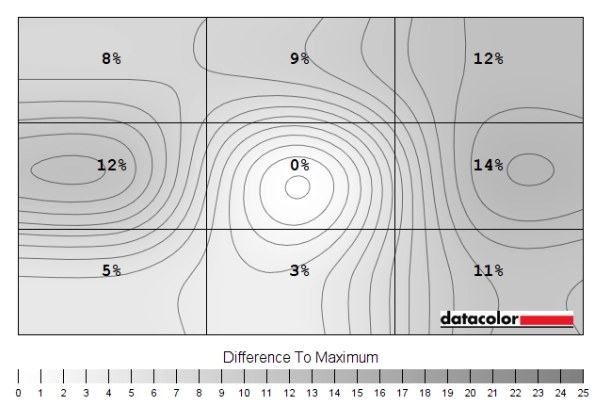
Luminance uniformity map
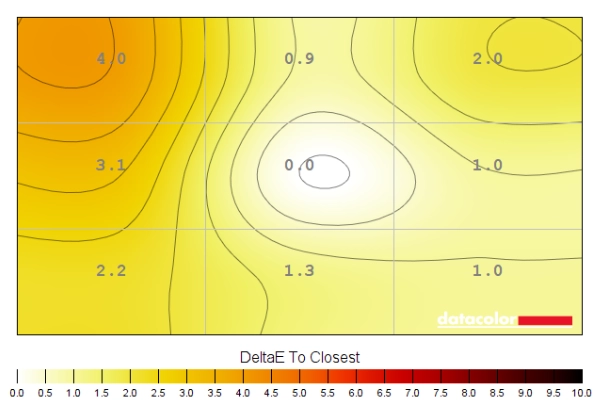
Colour temperature uniformity map
Contrast in games and movies
Lagom contrast tests
Colour reproduction
Colour gamut
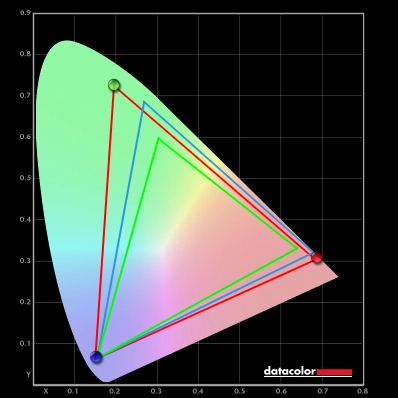
Colour gamut 'Test Settings'
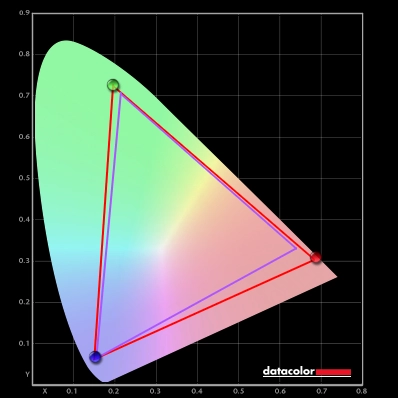
Colour gamut 'Test Settings' vs. Adobe RGB
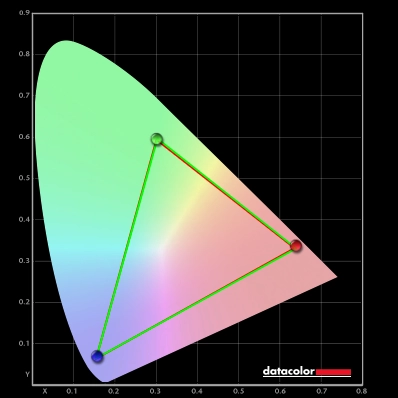
Colour gamut 'sRGB'

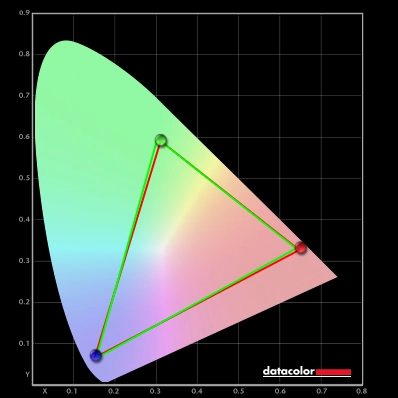
Colour gamut AMD 'CTC disabled' setting
Colour in games and movies
Shade representation using SpyderCHECKR 24
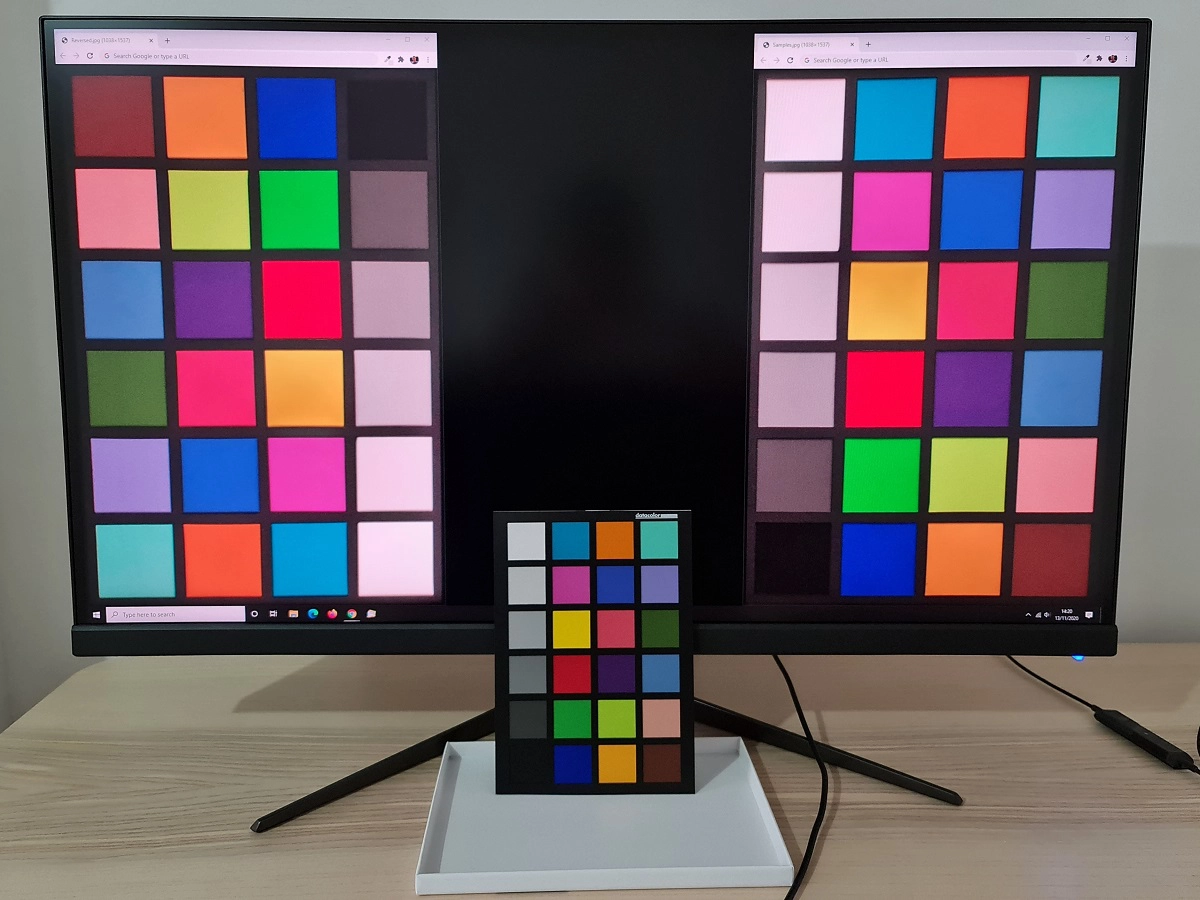
The monitor represents shades in strongly saturated and vibrant way. The camera is overly sensitive to the red Quantum Dots used for the monitor’s backlight, giving an underlying red hue to the image that is not observed as intensely by eye. There is however still a definite punchiness to the red elements shown on the screen and an initial red cast if comparing to a monitor with much less red energy from its backlight. Your eyes should adapt to this in time, but if not reducing the ‘R Bias’ control slightly in the ‘Color’ section of the OSD might help. The generous red coverage from the gamut makes some yellow shades appear richer with a stronger orange component than intended, for example lemon yellow (10) and gamboge (23). Peach pink (20) and light chocolate brown (24) also had a noticeable red cast due to the red component being brought out too strongly. Medium orange (3), Persian pink (6), tango pink (11) and candy apple red (14) showcased a very vibrant and sort of neon appearance. This was shared with dark lime green (18) as well, whilst Royal blue had a sort of copper sulfate quality to it that was quite striking but made it appear somewhat brighter than intended. This shade matched the printed sheet better by eye than it appears in the photo, however. The consistency of the screen was strong without the sort of clear saturation shifts you’d observe on a VA or TN model depending on the on-screen shade position. The image below shows how things appear using the sRGB emulation mode (setting ‘Color Space’ to ‘sRGB’ in the ‘Color’ section of the OSD).
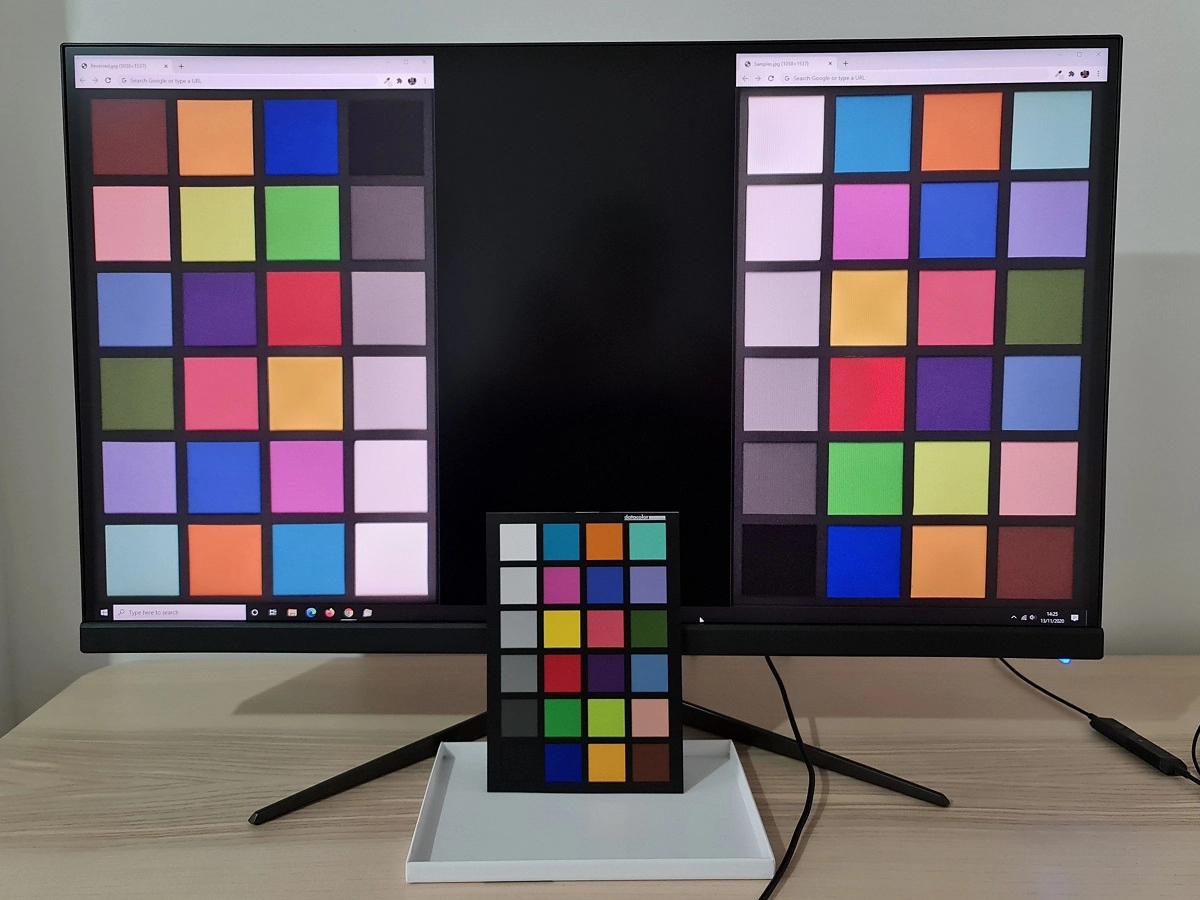
The saturation levels are significantly reduced now, due both to the colour gamut restrictions and the lower average gamma. In practice the image was a closer match with the printed sheet than it appears in the image. There was some deviation, but nowhere near as extreme as it appears in the image. The camera is again not getting on with the monitor’s backlight, causing it to capture some elements strangely. Regardless of this, both by eye and in the image, there was just a touch of underlying ‘red push’ to some reddish shades. Peach pink (20) and light chocolate brown (24) appeared a bit less neutral than they should, but again this is exaggerated in the image. Aquamarine (4) appeared a touch undersaturated and verged on an aqua shade by eye, perhaps due to the somewhat cool colour temperature on our unit with the sRGB setting active. But it certainly didn’t appear the icy shade that was captured by the camera. The overall representation of shades was quite respectable in practice, certainly a closer match to the printed sheet than when using the native gamut of the monitor. As usual, we’d recommend profiling the monitor with your own colorimeter or spectrophotometer using the native gamut if you require the highest level of colour accuracy.
Viewing angles
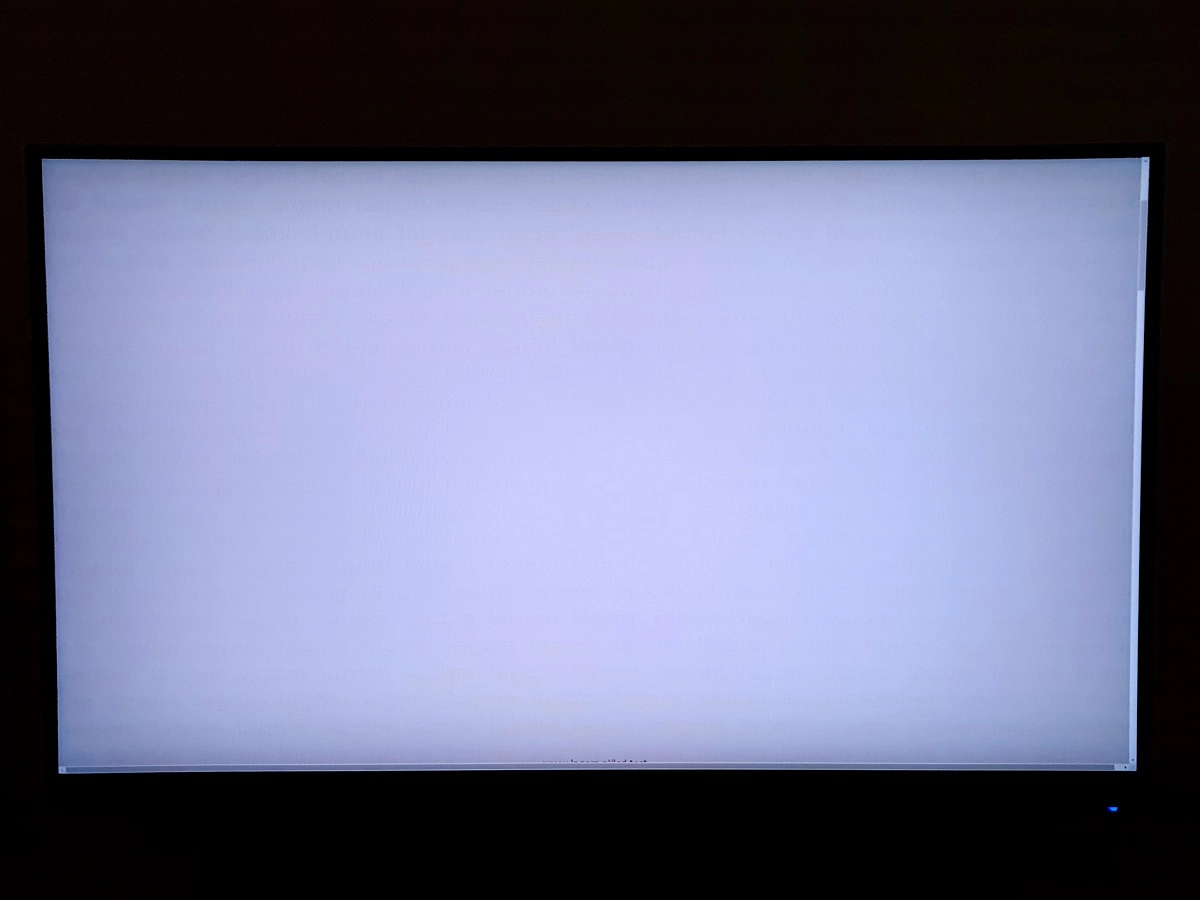
The video below shows the Lagom text test, a mixed desktop background, game scene and dark desktop background from a variety of viewing angles. You can see some shifts in contrast and colour for the mixed desktop background and game scene. These shifts are less pronounced than you’d see on TN or VA models but somewhat more pronounced than some IPS-type models with more of a ‘hazing’ effect at sharper viewing angles. The dark desktop background highlights ‘IPS glow’, which creates an obvious ‘bloom’ as viewing angles become steeper. Depending on angle, the glow may take on a coolish silver tint or a warmer and slightly orange tint.
Interlace pattern artifacts
Responsiveness
Input lag
Perceived blur (pursuit photography)
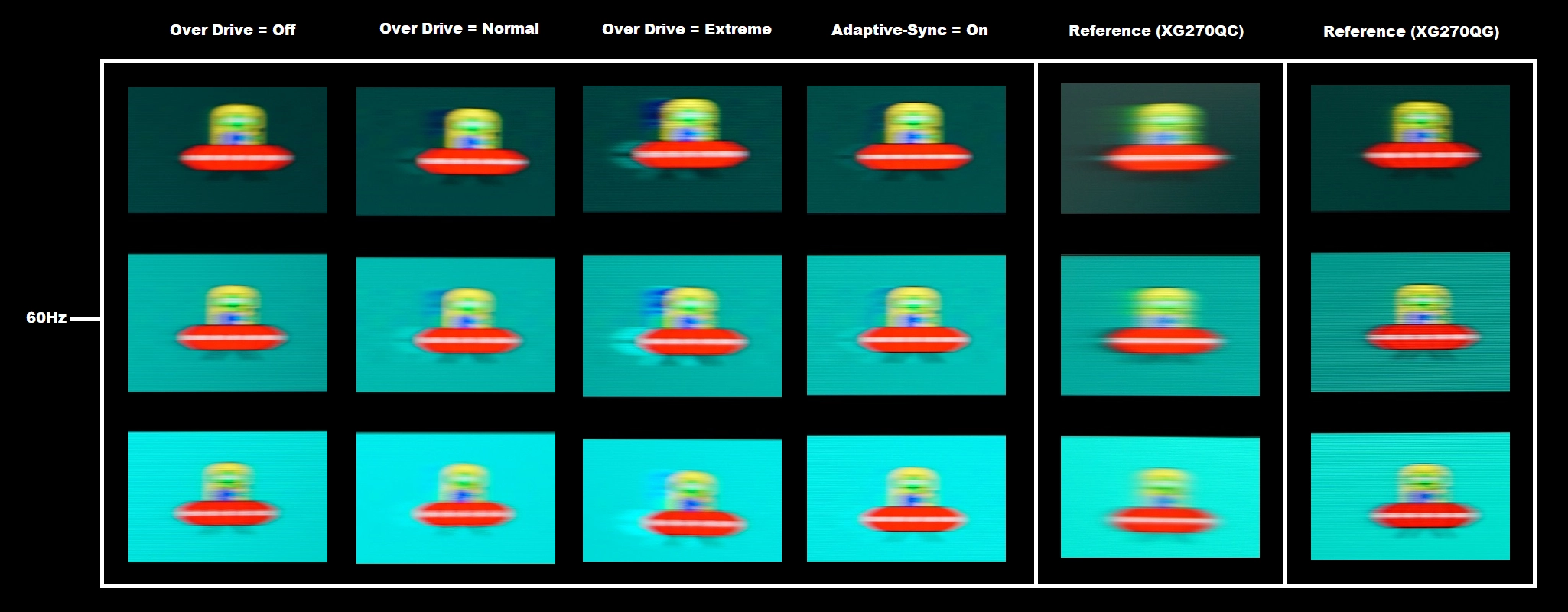
At 60Hz, shown above, the UFO appears relatively broad without clear internal details. This reflects a significant degree of perceived blur due to eye movement and is tied to the 60Hz refresh rate. There are also varying degrees of trailing behind the UFOs due to weaknesses in pixel responsiveness. There’s actually very little in the way of conventional trailing. The ‘Off’ setting is actually very well-suited for 60Hz, providing ‘clean’ results that are actually slightly better than even the fast IPS-type reference screen. Increasing the ‘Over Drive’ setting really just serves to introduce overshoot. This was quite strong even using the ‘Normal’ setting, with clear colourful bright trailing behind with a bright or otherwise inky appearance. This is strengthened further using the ‘Extreme’ setting. ‘Adaptive-Sync = On’ locks into a setting that’s most similar to ‘Normal’, although the overshoot is a touch weaker. So moderately strong, but not extreme. We consider ‘Off’ the optimal setting at 60Hz, provided you’re able to adjust the setting as you’re not using Adaptive-Sync. The pursuit photographs below show how things looked with refresh rate doubled, to 120Hz.
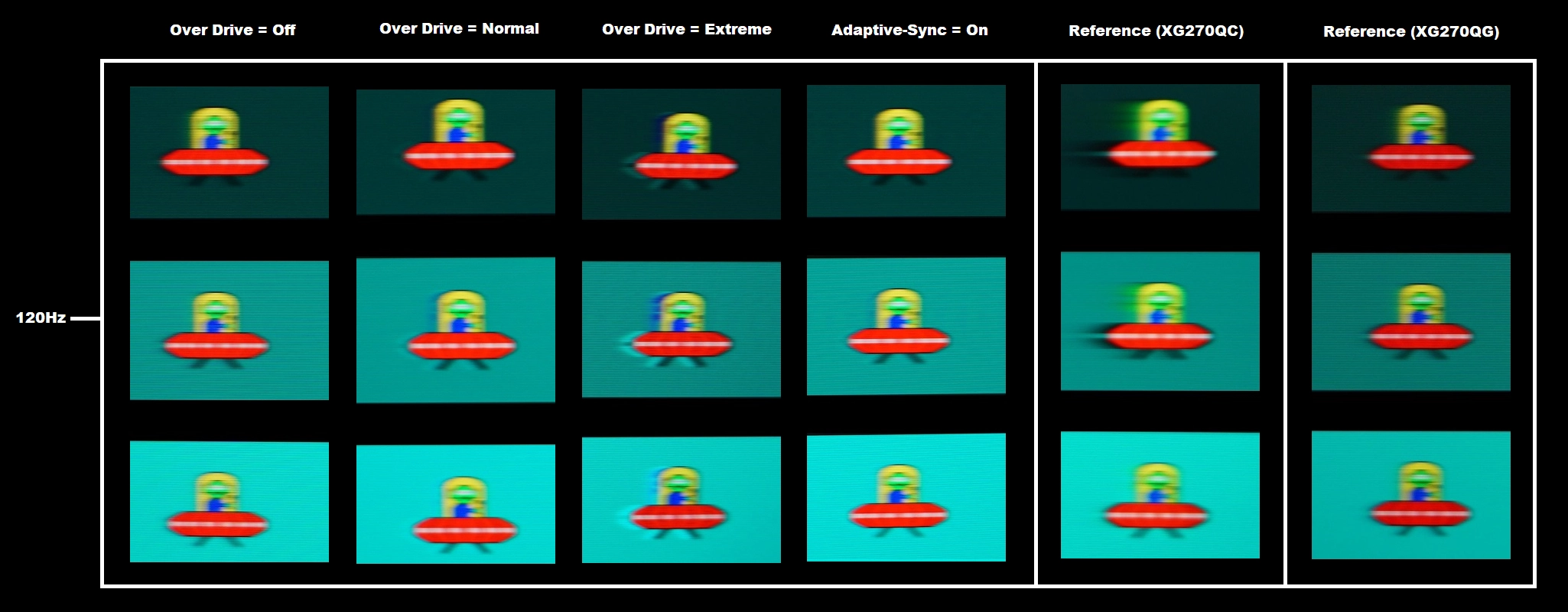
At 120Hz, shown above, the UFO now appears significantly narrower with somewhat clearer internal detailing. This indicates a significant reduction in perceived blur due to eye movement. There are again varying degrees of trailing behind the UFOs due to weaknesses in pixel responsiveness. The ‘Off’ setting provides quite a clean performance, although a bit of ‘powdery’ trailing is introduced now due to the increased pixel response requirements of the doubled refresh rate. Particularly for the dark background (top row) and a bit for the medium background (middle row). This is reduced compared to the fast IPS-reference and in a different league to the VA reference. The ‘Normal’ setting removes the ‘powdery’ trailing but introduces some overshoot – not extreme, but certainly something sensitive users would notice. The ‘Extreme’ setting ramps this up so it’s very obvious. We consider ‘Off’ or ‘Normal’ optimal here depending on your overshoot tolerance. ‘Adaptive-Sync = On’ is essentially a slightly less aggressive version of the ‘Normal’ setting and we feel it strikes a nice balance. The pursuit photographs below show how things look with refresh rate bumped up just a little to 144Hz.
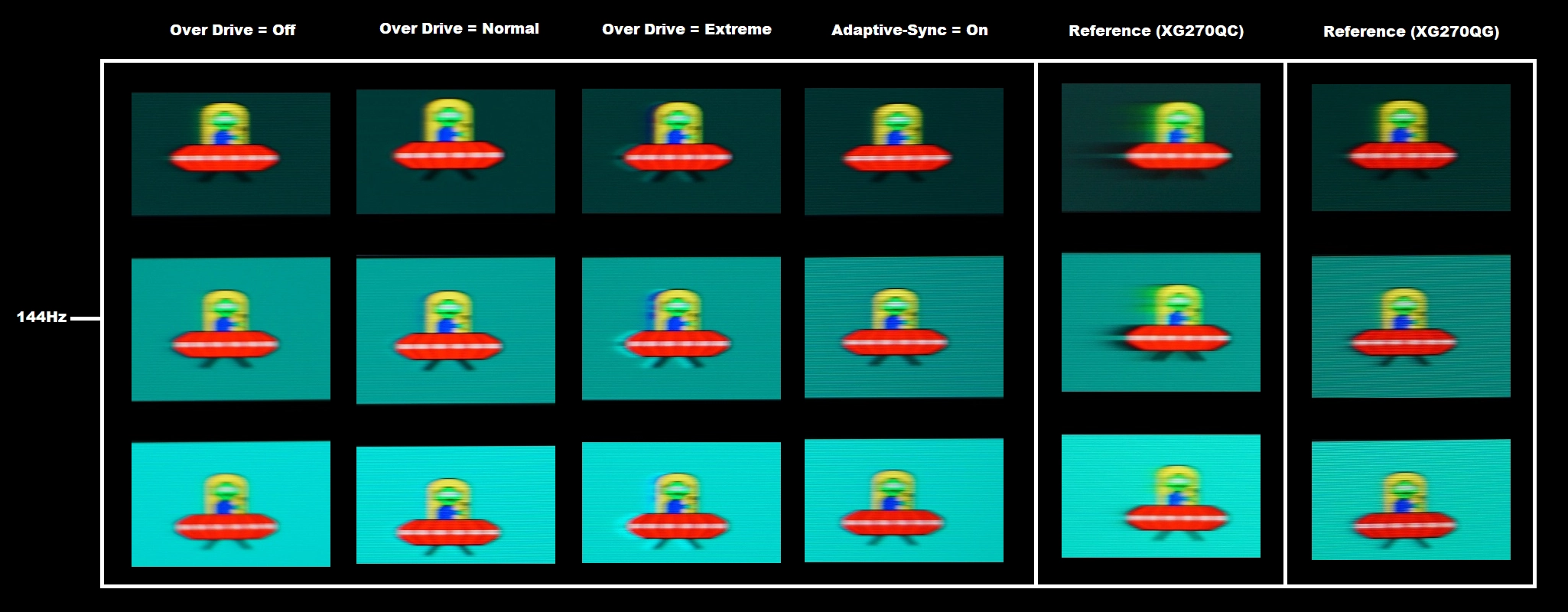
At 144Hz, shown above, the UFO appears just slightly narrower with slightly clearer internal detailing. This is a much smaller bump up in refresh rate than before, so the differences aren’t as pronounced. The pixel response behaviour is quite similar to before. The ‘powdery trailing’ with the ‘Off’ setting is now increased just slightly due to the raised pixel response requirements for an optimal performance. It’s improved compared to even the fast reference screen, however. The ‘Normal’ setting again gets rid of this and introduces some overshoot – it’s slightly less noticeable than at 120Hz as well. The ‘Extreme’ setting again sticks by its namesake with the level of overshoot that’s introduced. We consider ‘Normal’ optimal here, although users sensitive to overshoot may prefer ‘Off’. ‘Adaptive-Sync = On’ provides a rather clean performance here, further cutting down the overshoot whilst still providing the very rapid pixel responses required for a very competent 144Hz performance. The pursuit photographs below show how things look increased further, to 170Hz.

At 170Hz, shown above, the UFOs appear slightly narrower and more sharply focused again. This is due to a further decrease in perceived blur due to eye movement. The trailing behind the UFOs is not dramatically different to 144Hz, although the further increase in pixel response requirements make the ‘Off’ setting even less suitable now. There’s a further increase in ‘powdery’ trailing. And considering a broader range of transitions, as you’d observe whilst gaming, this translated into more noticeable perceived blur compared to using the ‘Normal’ setting. The overshoot levels with the ‘Normal’ setting are further decreased compared to 144Hz. There’s just a slight ‘shadowy’ trail behind the UFO for the medium background pus a little bright ‘halo’ trailing. The ‘Extreme’ again ramps up the overshoot so it’s very eye-catching. We consider ‘Normal’ optimal here – the ‘Adaptive-Sync = On’ state is again like this with slightly cut-down overshoot. With this, there’s just the faintest whiff of ‘powdery’ trailing introduced particularly for the dark background – but even that is very slight indeed. The overall balance here is exceptional, with very low overshoot and no real conventional trailing to speak of. A very convincing 170Hz performance in this test, something that’s shared under our broader analysis shortly.
Responsiveness in games and movies

FreeSync – the technology and activating it
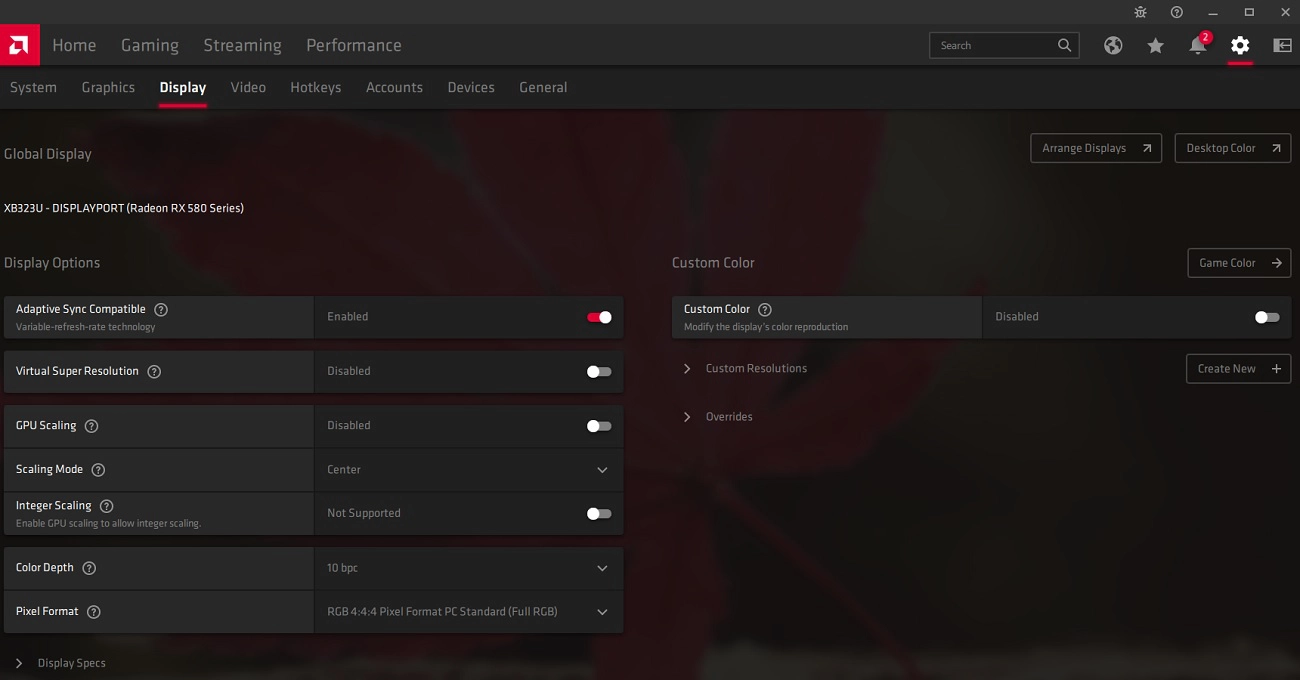
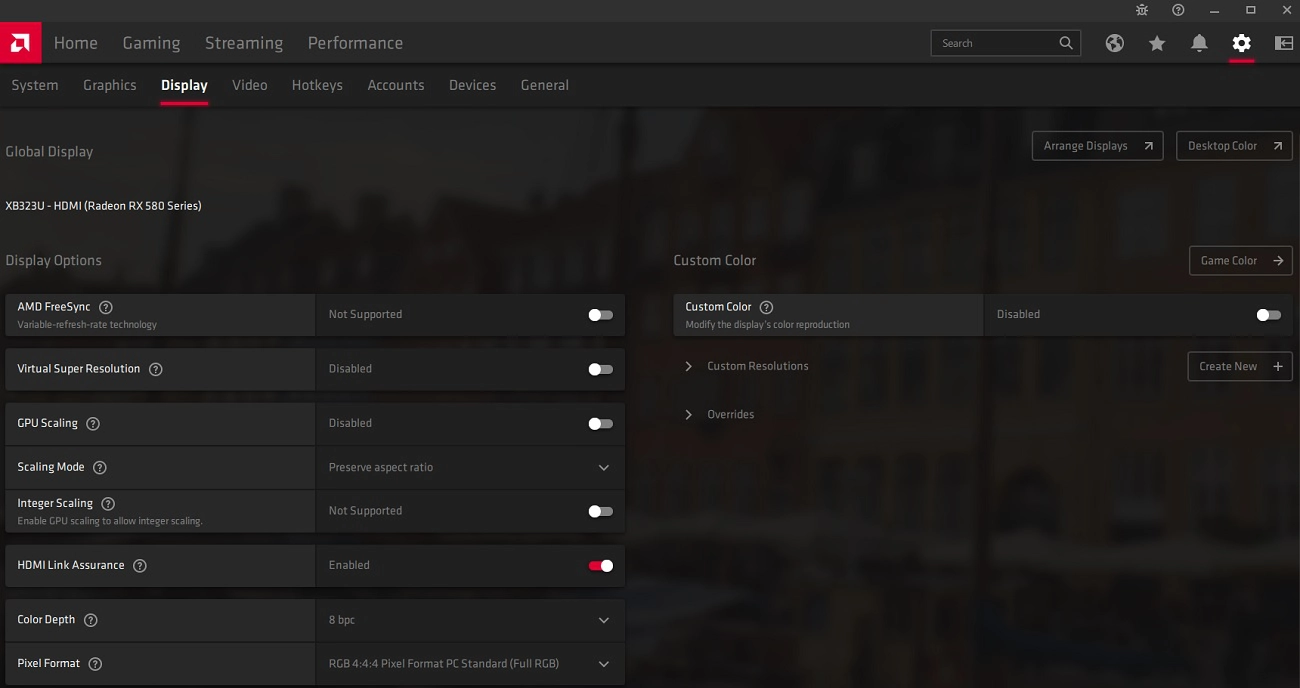
The Acer supports a variable refresh rate range of 55 – 170Hz*.. This means that if the game is running between 55fps and 170fps, the monitor will adjust its refresh rate to match. When the frame rate rises above 170fps, the monitor will stay at 170Hz and the GPU will respect your selection of ‘VSync on’ or ‘VSync off’ in the graphics driver. With ‘VSync on’ the frame rate will not be allowed to rise above 170fps, at which point VSync activates and imposes the usual associated latency penalty. With ‘VSync off’ the frame rate is free to climb as high as the GPU will output (potentially >170fps). AMD LFC (Low Framerate Compensation) is also supported by this model, which means that the refresh rate will stick to multiples of the frame rate where it falls below the 55Hz (55fps) floor of operation for FreeSync. If a game ran at 32fps, for example, the refresh rate would be 64Hz to help keep tearing and stuttering at bay. This feature is used regardless of VSync setting, so it’s only above the ceiling of operation where the VSync setting makes a difference.

Some users prefer to leave VSync enabled but use a frame rate limiter set a few frames below the maximum supported (e.g. 167fps) instead, avoiding any VSync latency penalty at frame rates near the ceiling of operation or tearing from frame rates rising above the refresh rate. If you activate the ‘Refresh Rate Num’ setting in the ‘Gaming’ section of the OSD, this will display the refresh rate of the display and therefore indicate the frame rate if ‘FreeSync’ is active and the frame rate is within the variable refresh rate range of the display. The final point to note is that FreeSync only removes stuttering or juddering related to mismatches between frame rate and refresh rate. It can’t compensate for other interruptions to smooth game play, for example network latency or insufficient system memory. Some game engines will also show stuttering (or ‘hitching’) for various other reasons which won’t be eliminated by the technology.
FreeSync – the experience
Nvidia Adaptive-Sync (‘G-SYNC Compatible’)
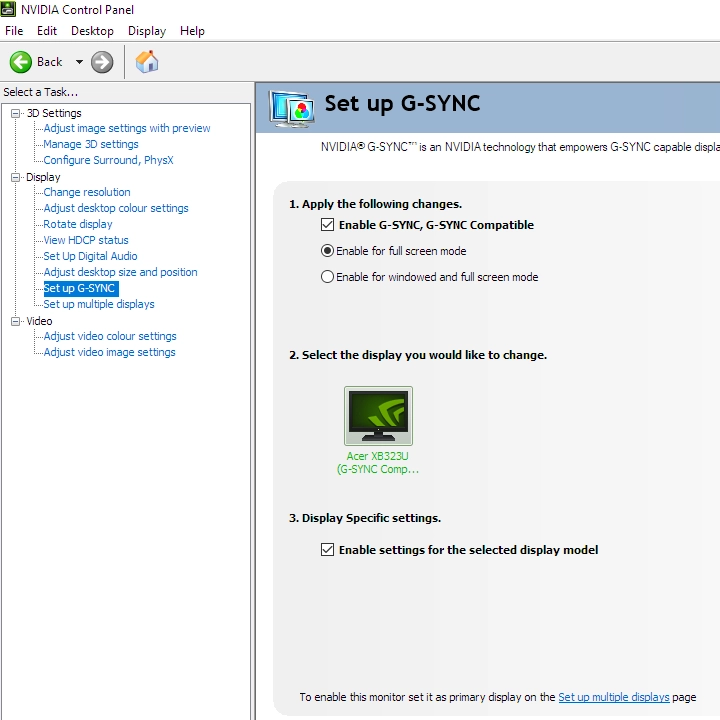
As noted previously and as highlighted in Nvidia Control Panel, this model has been specifically tested and validated as ‘G-SYNC Compatible’ by Nvidia. The experience using ‘G-Sync Compatible Mode’ on our RTX 3090 was very similar to the experience using AMD FreeSync on this model. We observed the same VRR range and an LFC-like frame to refresh multiplication technology was employed below that to keep tearing and stuttering from frame and refresh rate mismatches at bay. There was again a momentary stuttering as the boundary was crossed, as we observed with our AMD GPU as well.
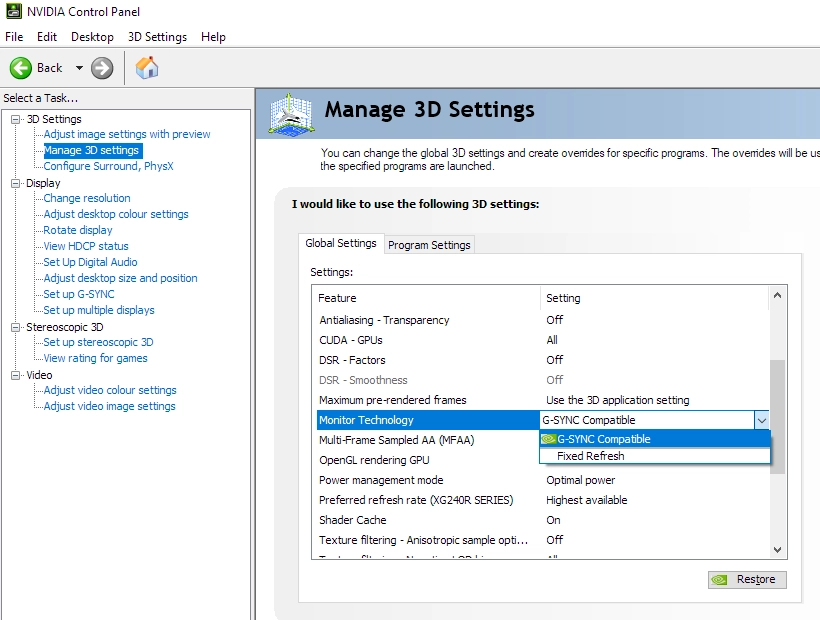
Finally, remember that you can activate the ‘Refresh Rate Num’ setting in the ‘Gaming’ section of the OSD to display the current refresh rate of the monitor. This will reflect the frame rate if it’s within the main variable refresh rate window, with the additional fluctuations described above possible depending on your GPU. And as with AMD FreeSync, HDR can be used at the same time as ‘G-SYNC Compatible Mode’.
HDR (High Dynamic Range)
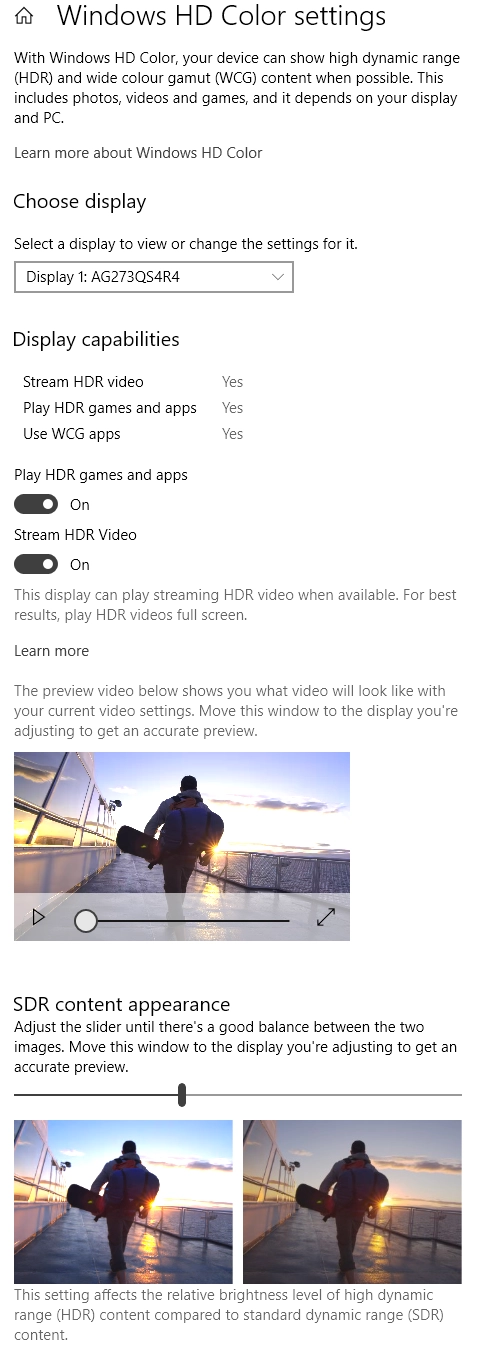

Colour gamut 'Test Settings'
The HDR10 pipeline makes use of 10-bits per colour channel, which the monitor supports via 8-bit + FRC. At 120Hz+ via HDMI the dithering stage is offloaded to the GPU at the native resolution, for bandwidth reasons. We’ve carefully observed a range of content (including fine gradients) on a broad range of monitors where 10-bit is supported monitor side (usually 8-bit + FRC) and where the GPU handles the dithering under HDR. Including comparisons with a given model where the monitor handles the dithering at some refresh rates and the GPU handles it at others. Regardless of the method used to achieve the ’10-bit’ colour signal, the visual output at the end of it all is very similar. It’s possible some subtle differences might be picked up during a careful side by side comparison of very specific content, but the difference really isn’t clear. The 10-bit colour signal enhances the nuanced shade variety, bringing advantages to the display of shades at both the high end low ends. Weather effects, smoke, sky and other fine gradients are handled with superior precision and showcase smoother and more natural progressions than observed under SDR. A broader range of closely matching dark shades makes shaded areas appear more natural or ‘believable’ as well, lifting out some subtle details and keeping things defined in a way that simply isn’t observed under SDR. The following image shows a scene from Shadow of the Tomb Raider which we find particularly good at highlighting a strong HDR performance. Remember that the photo is purely for illustrative purposes and in no way represents how the monitor appeared running HDR in person.
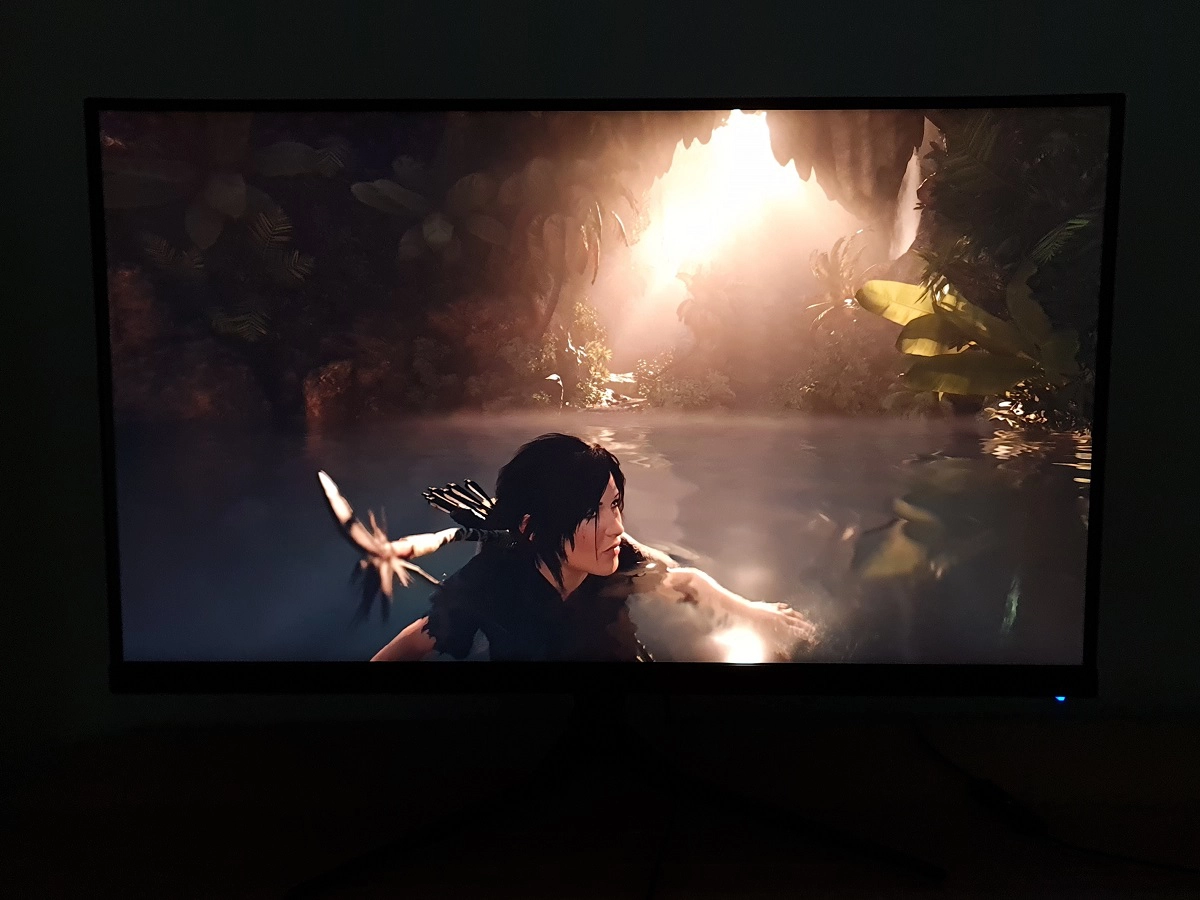
The 32″ 2560 x 1440 experience
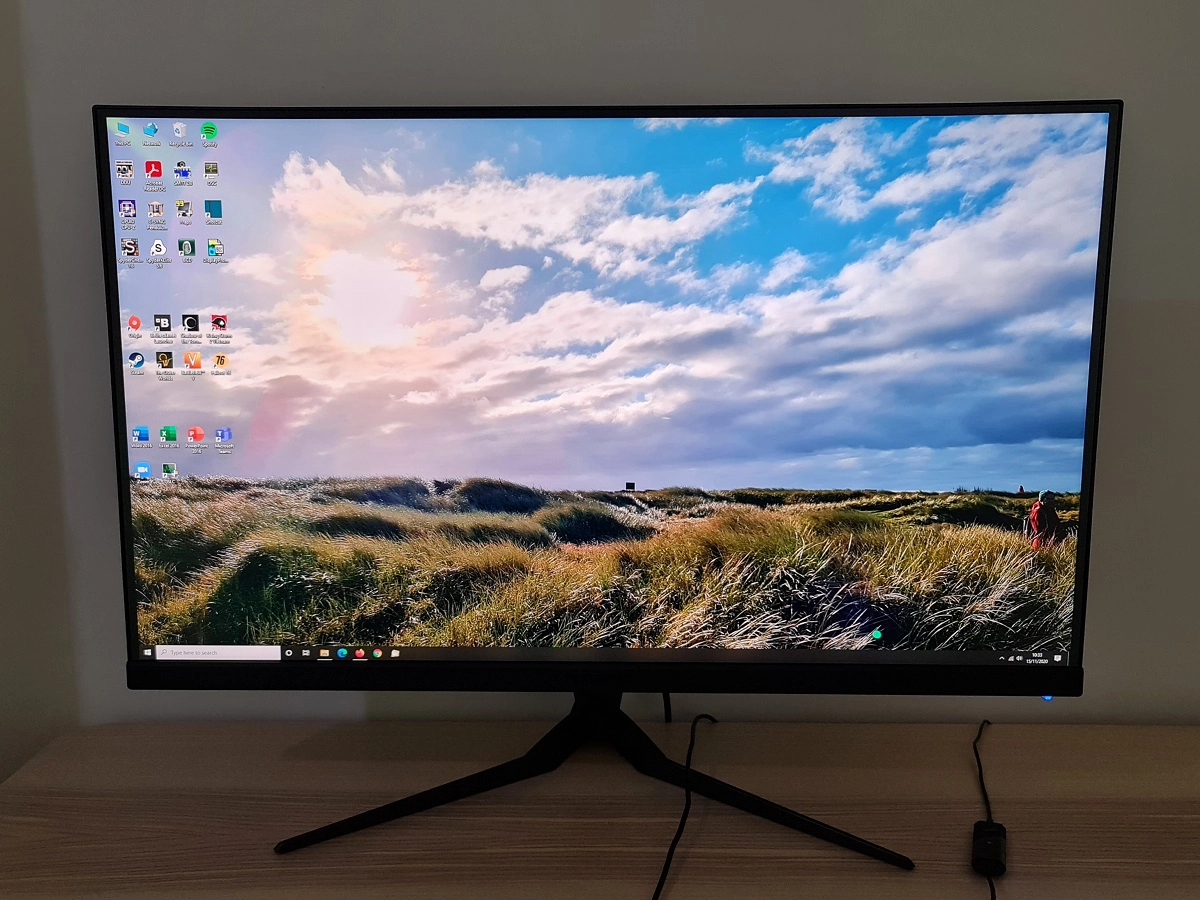
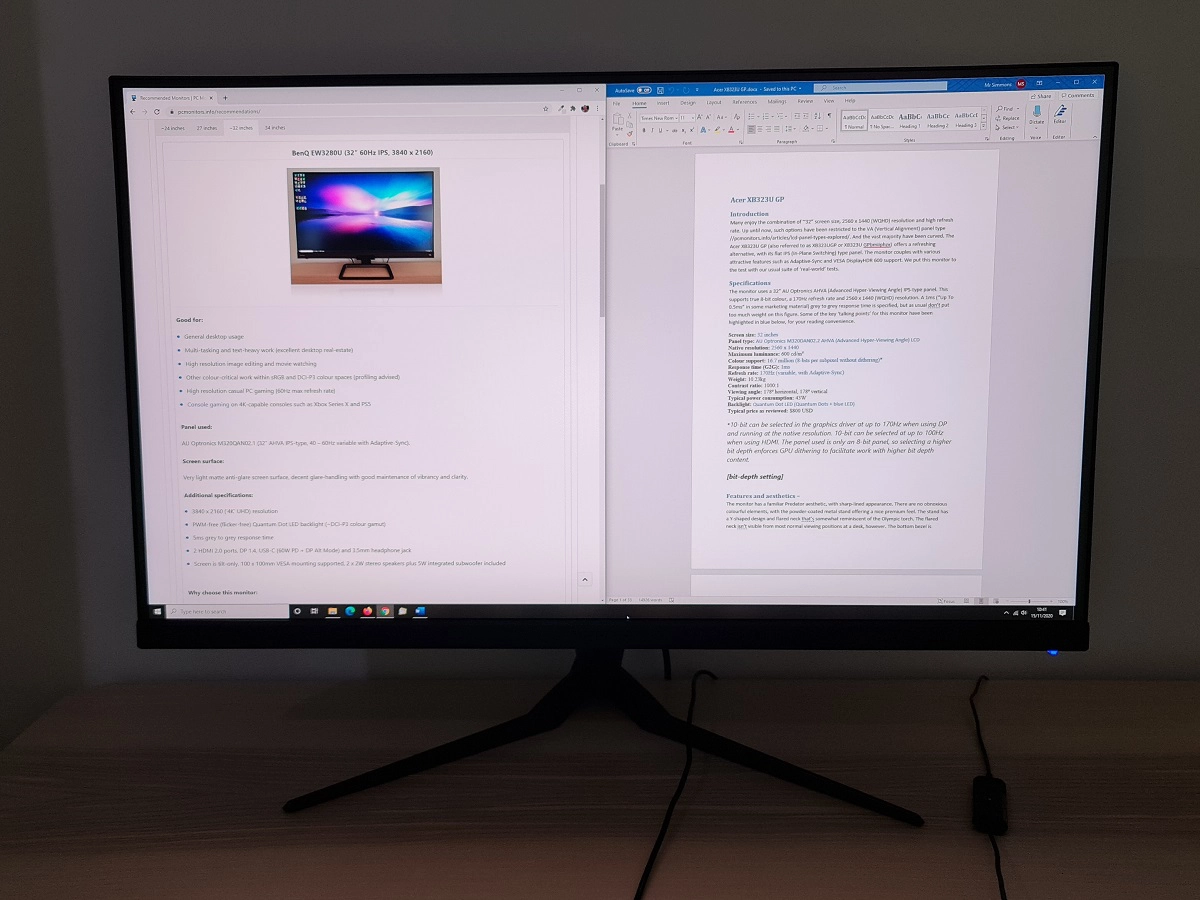
The size also means you can move further back if you wish, using the screen for gaming (and indeed other tasks) from a distance. Viewing a movie or gaming on a console on the couch or your bed, for example. We found the gaming experience engrossing whilst sitting at a desk – and whilst we prefer tighter pixel densities ourselves, finding ‘4K’ UHD models of this size particularly rewarding, the pixel density still didn’t strike us as ‘poor’ by any means. With detail levels cranked up we felt this screen was a very nice ally for our newly purchased RTX 3090. The photos below are again just here to fire up your imagination and don’t accurately represent how the monitor appears in person. They show a range of game titles running on the monitor.
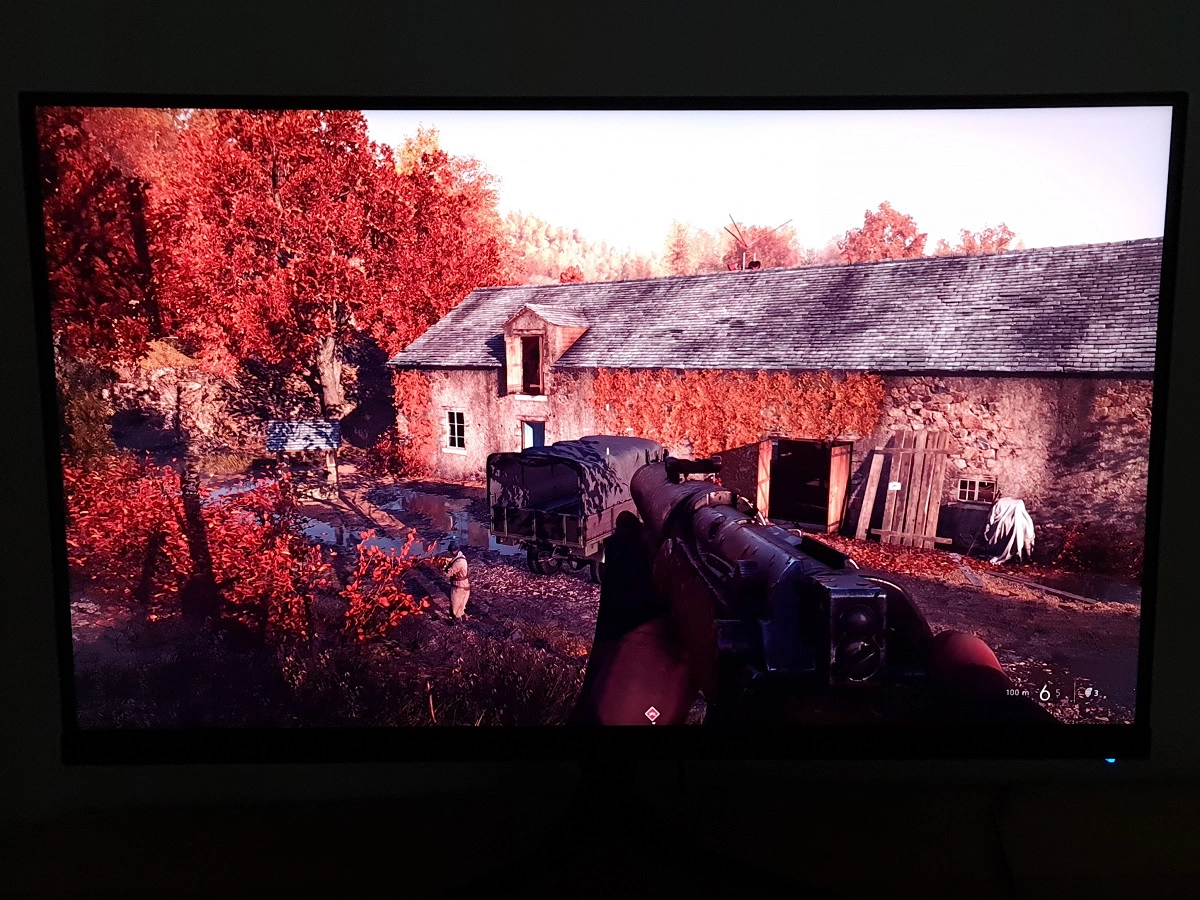
Interpolation and upscaling

Video review
Timestamps:
Features & Aesthetics
Contrast
Colour reproduction
HDR (High Dynamic Range)
Responsiveness (General)
Responsiveness (Adaptive-Sync)
Conclusion
The bottom line; a solid performer under both SDR and HDR, with strong vibrancy and a convincing 170Hz performance.
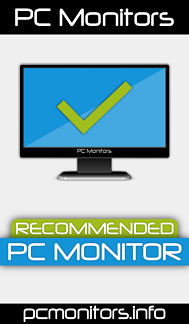
Positives Negatives Strong ‘out of the box’ gamma tracking and OSD flexibility, a very vibrant look to the image with a highly generous colour gamut and strong colour and gamma consistency
sRGB emulation setting doesn’t offer full OSD flexibility, a DCI-P3 emulation mode or something that slightly clamps the gamut might’ve been nice as well Static contrast in-line with expectations, a ‘very light matte’ anti-glare screen preserves clarity and vibrancy well and a competent HDR performance ‘IPS glow’ ate away at atmosphere for darker scenes, ‘light misty’ graininess to screen surface and a greater number of dimming zones would be welcome A solid 170Hz performance with well-tuned pixel responses and low input lag, Adaptive-Sync did its thing on both our AMD and Nvidia GPUs Some overshoot, particularly as refresh rate dips – ‘Over Drive’ setting is locked with Adaptive-Sync active Good ergonomic flexibility and a good premium feel due to stand design and material choice. Screen size and resolution provides an immersive experience with decent desktop real-estate and reasonable pixel density Pixel density not particularly high when compared to 27” models with this resolution and moreover ~32” ‘4K’ UHD models
As an Amazon Associate I earn from qualifying purchases made using the below link. Where possible, you’ll be redirected to your nearest store. Further information on supporting our work.


